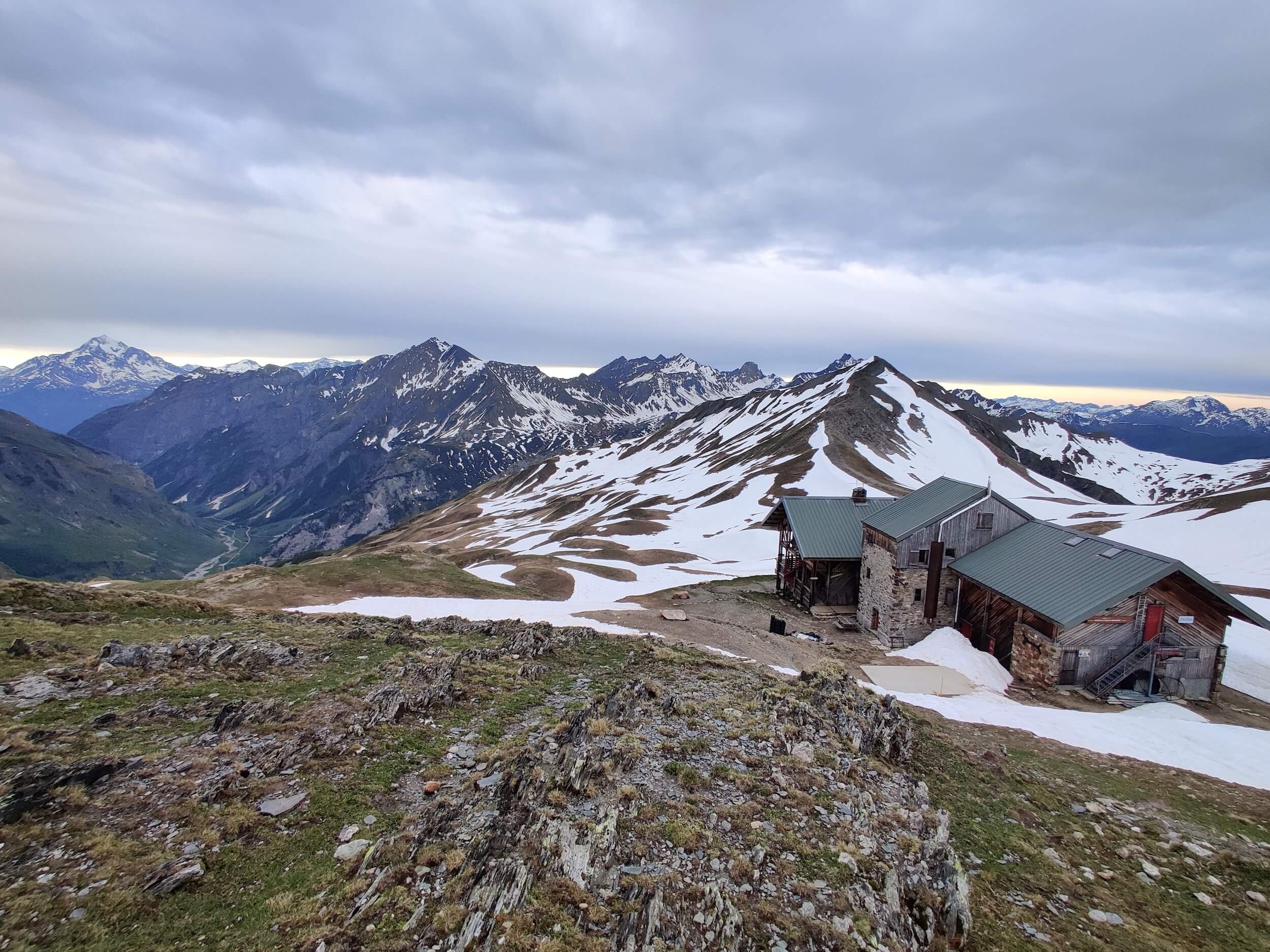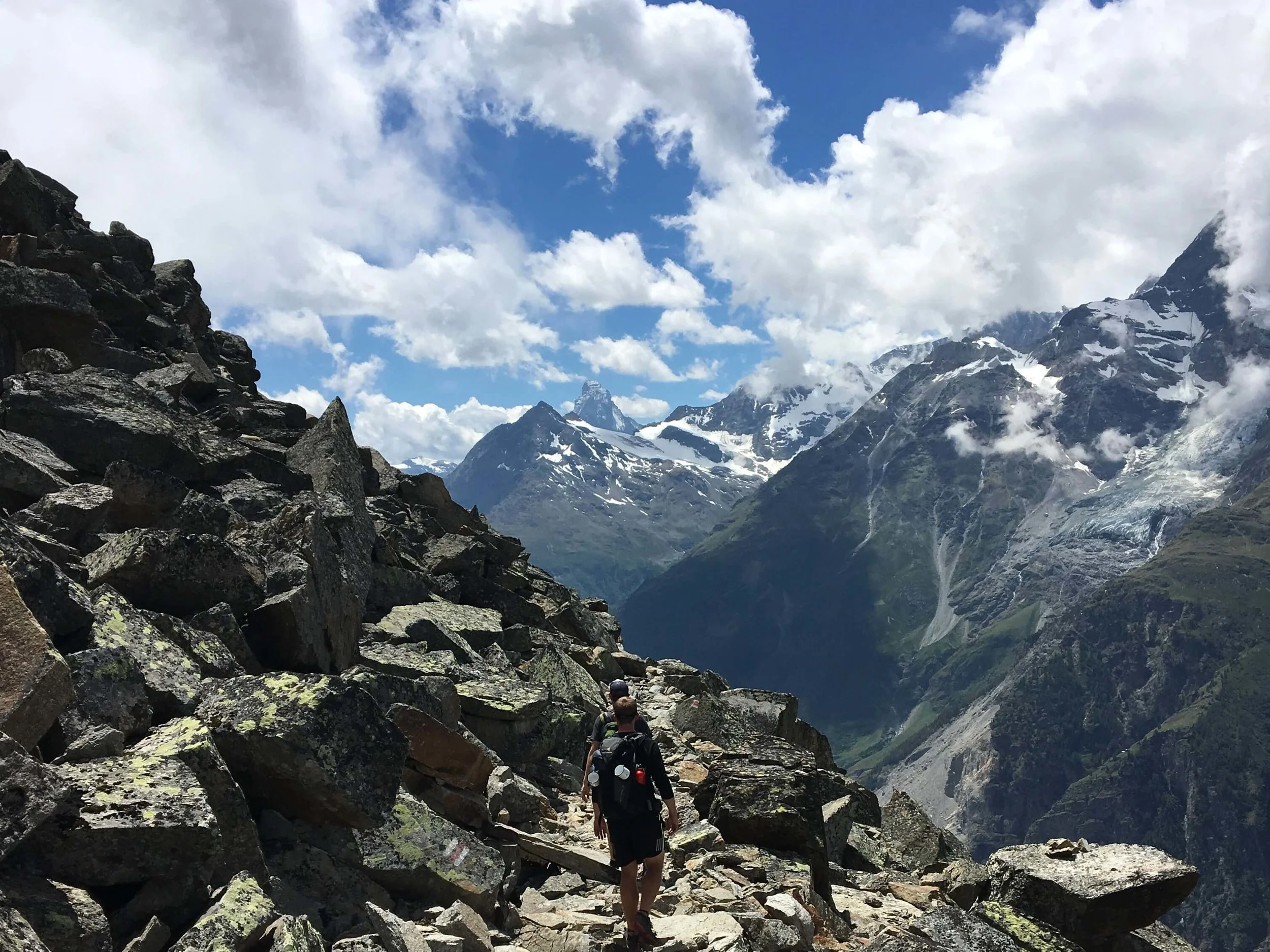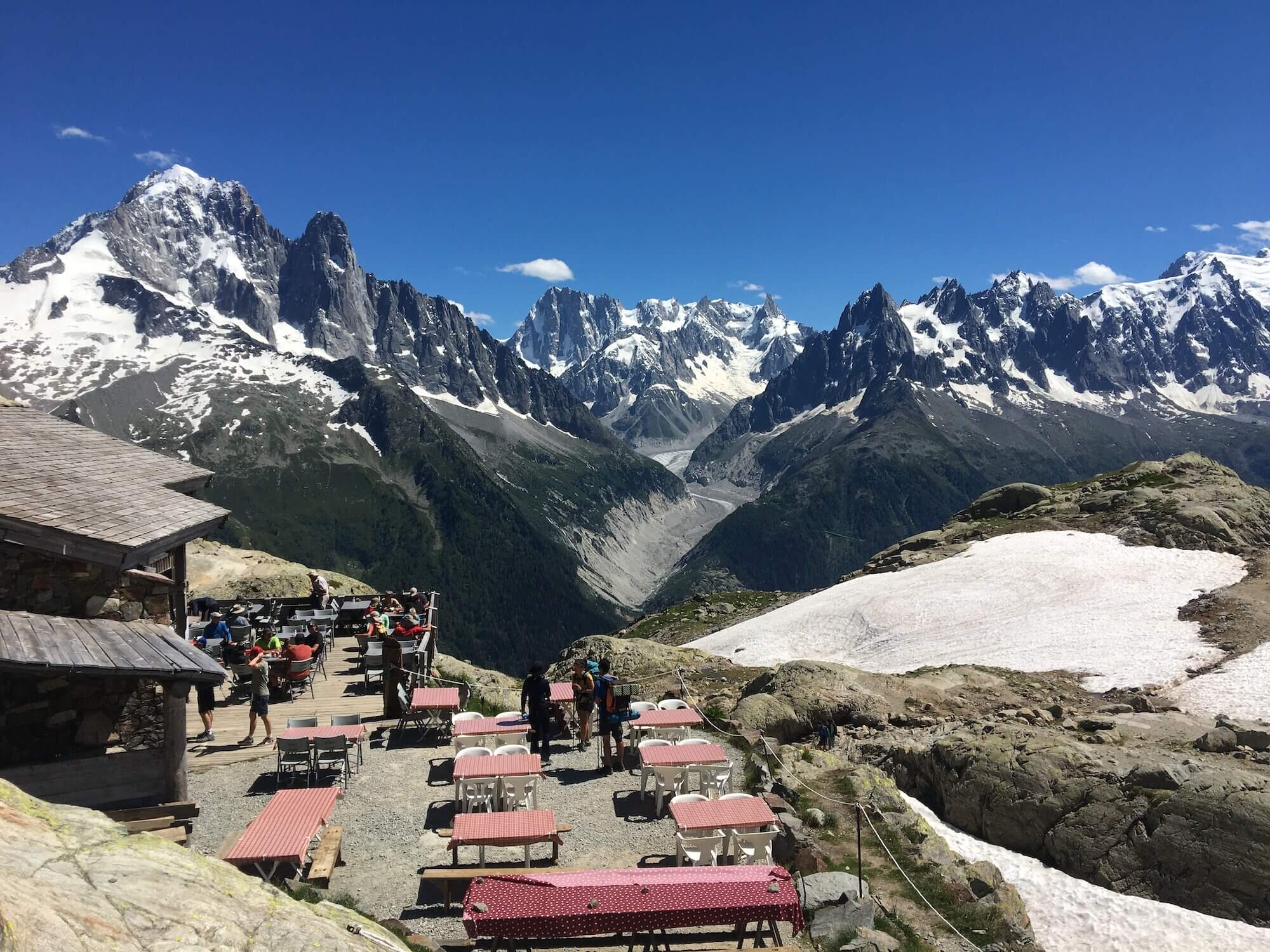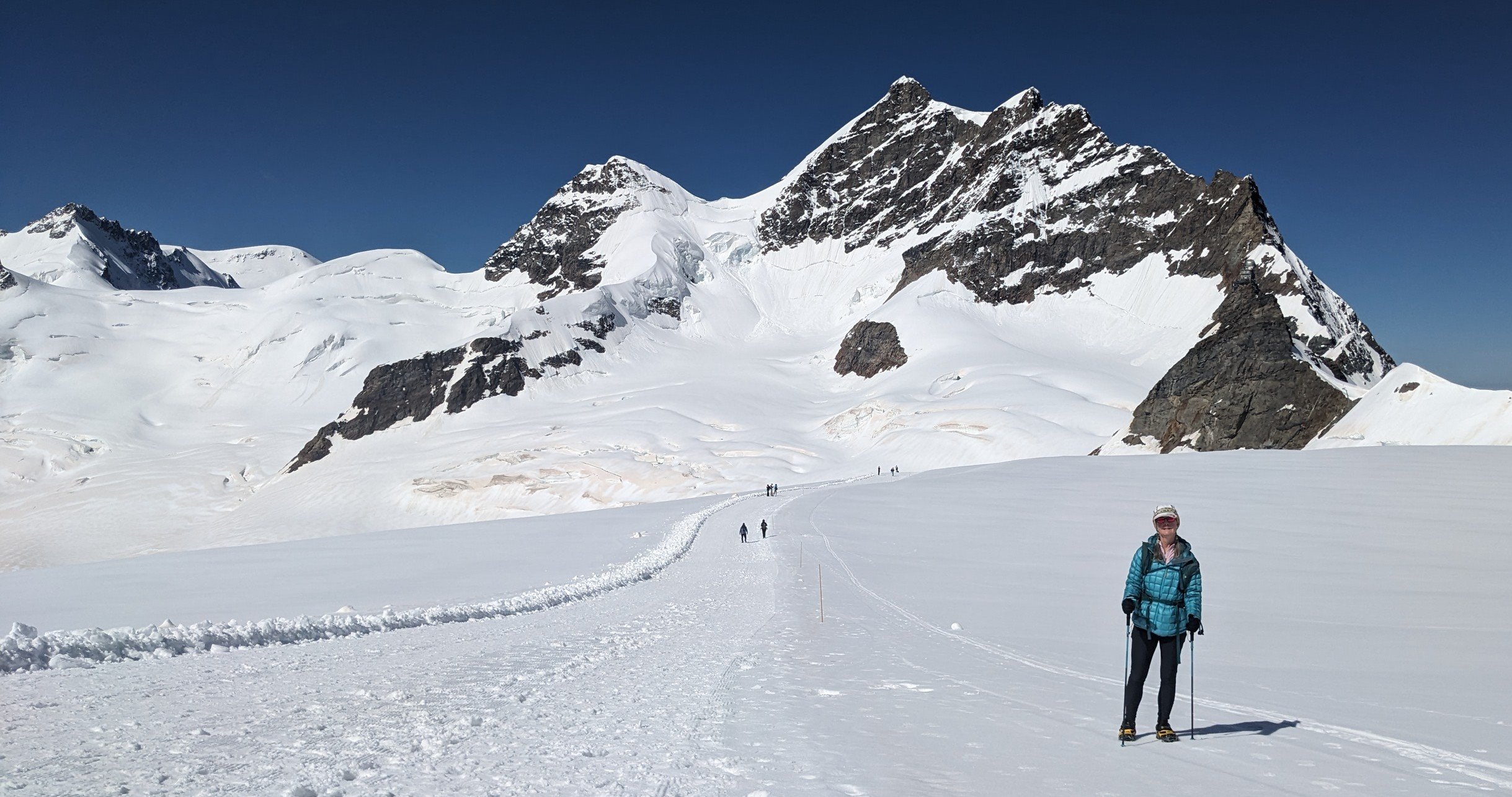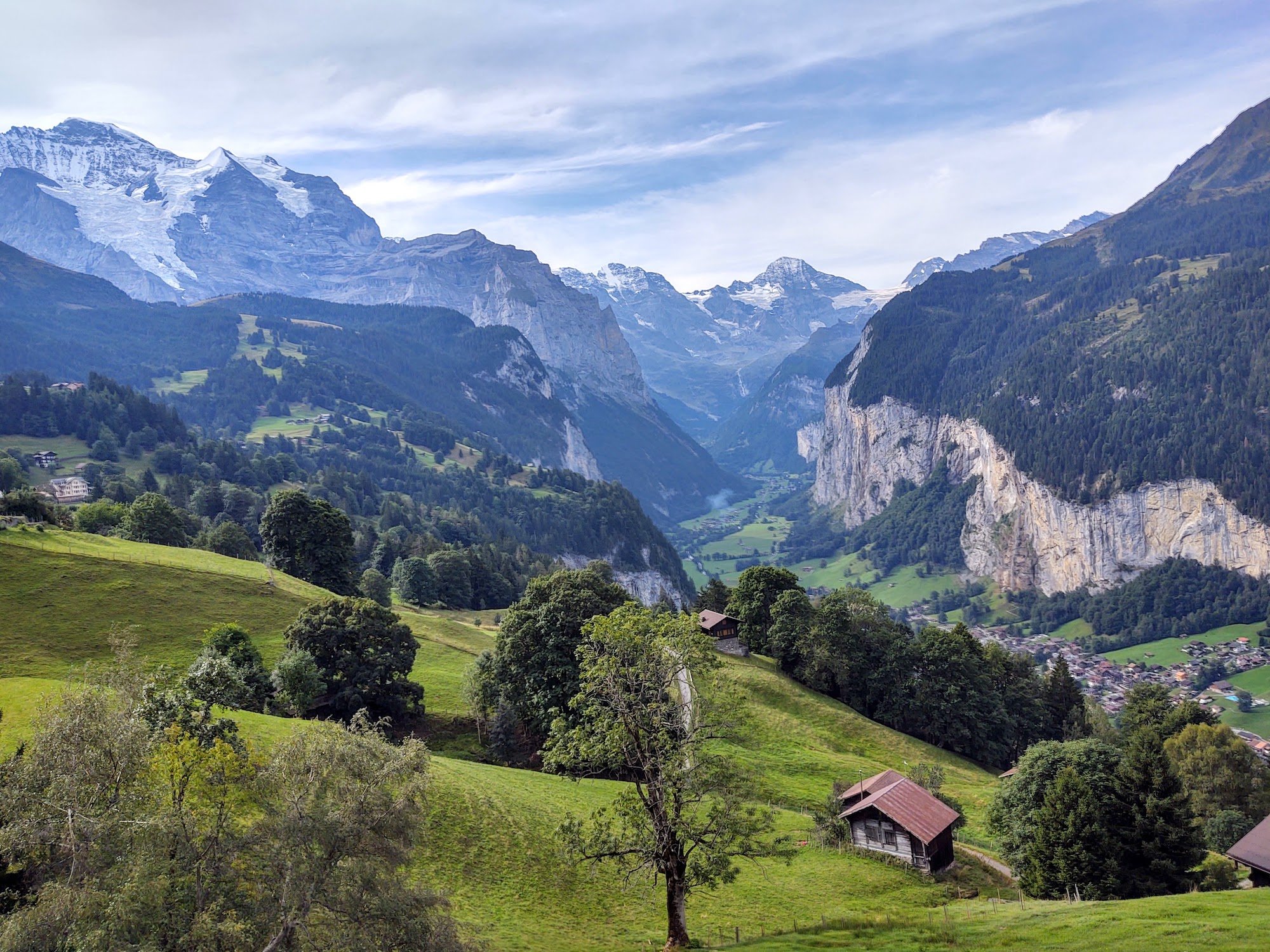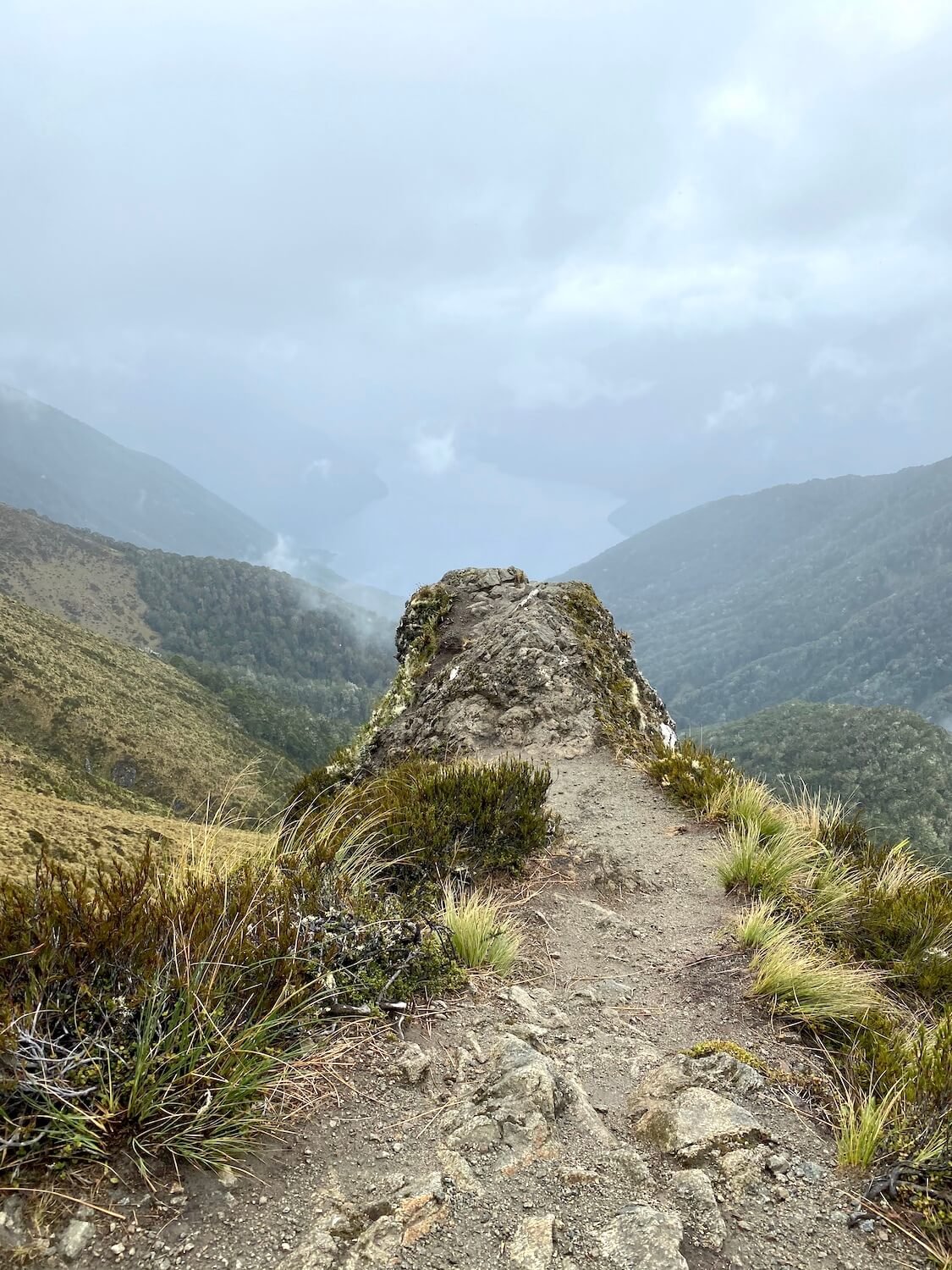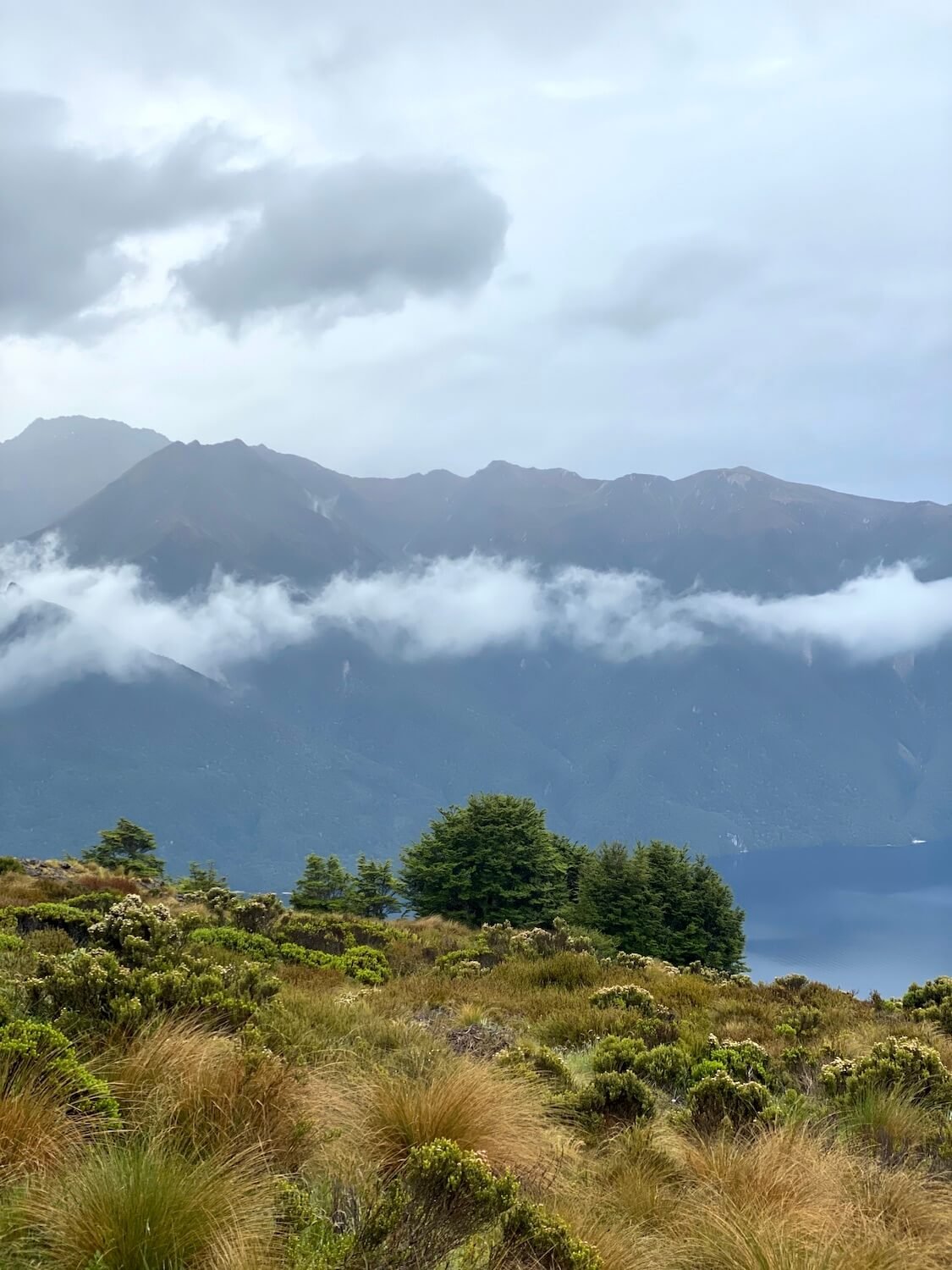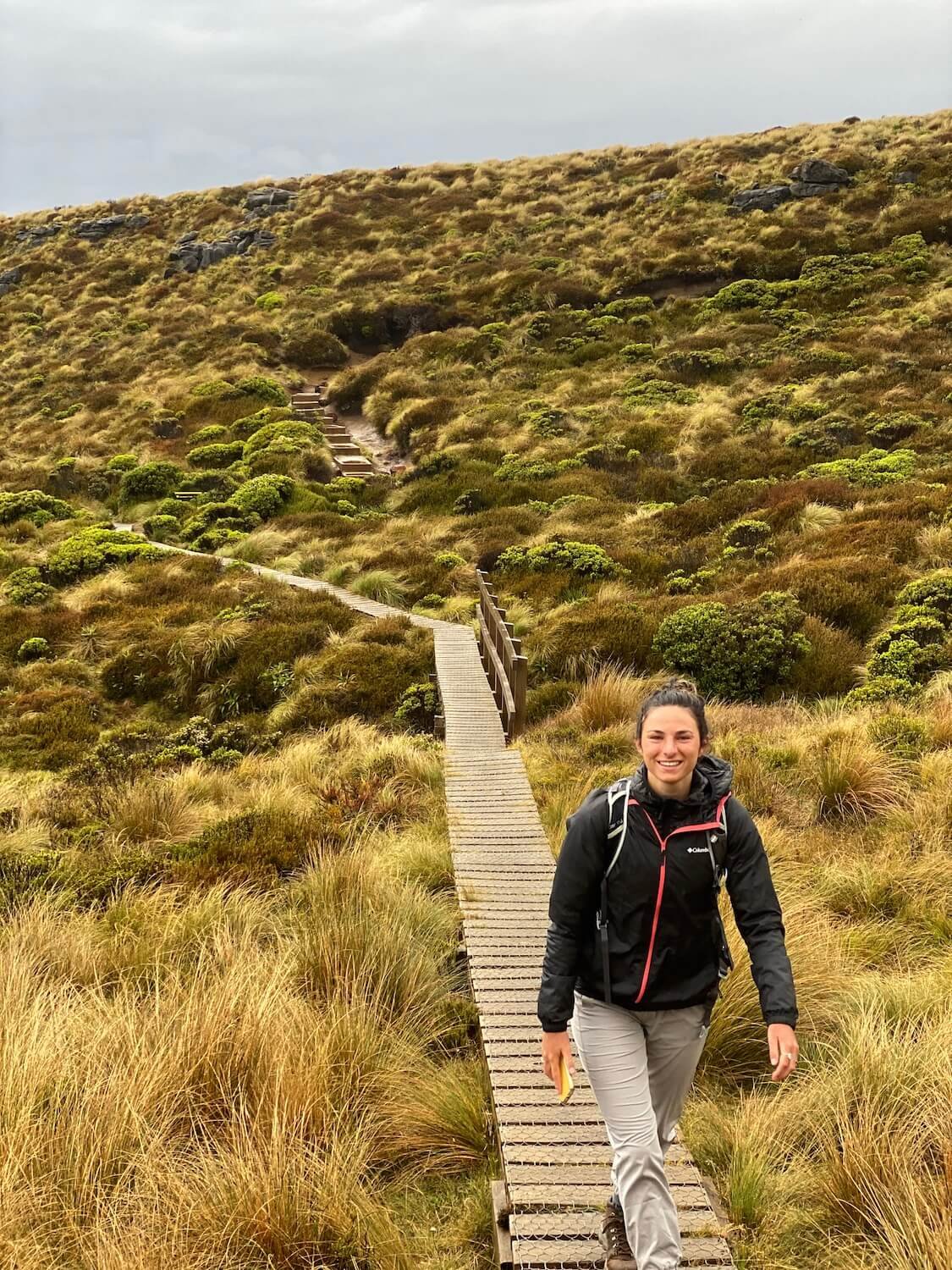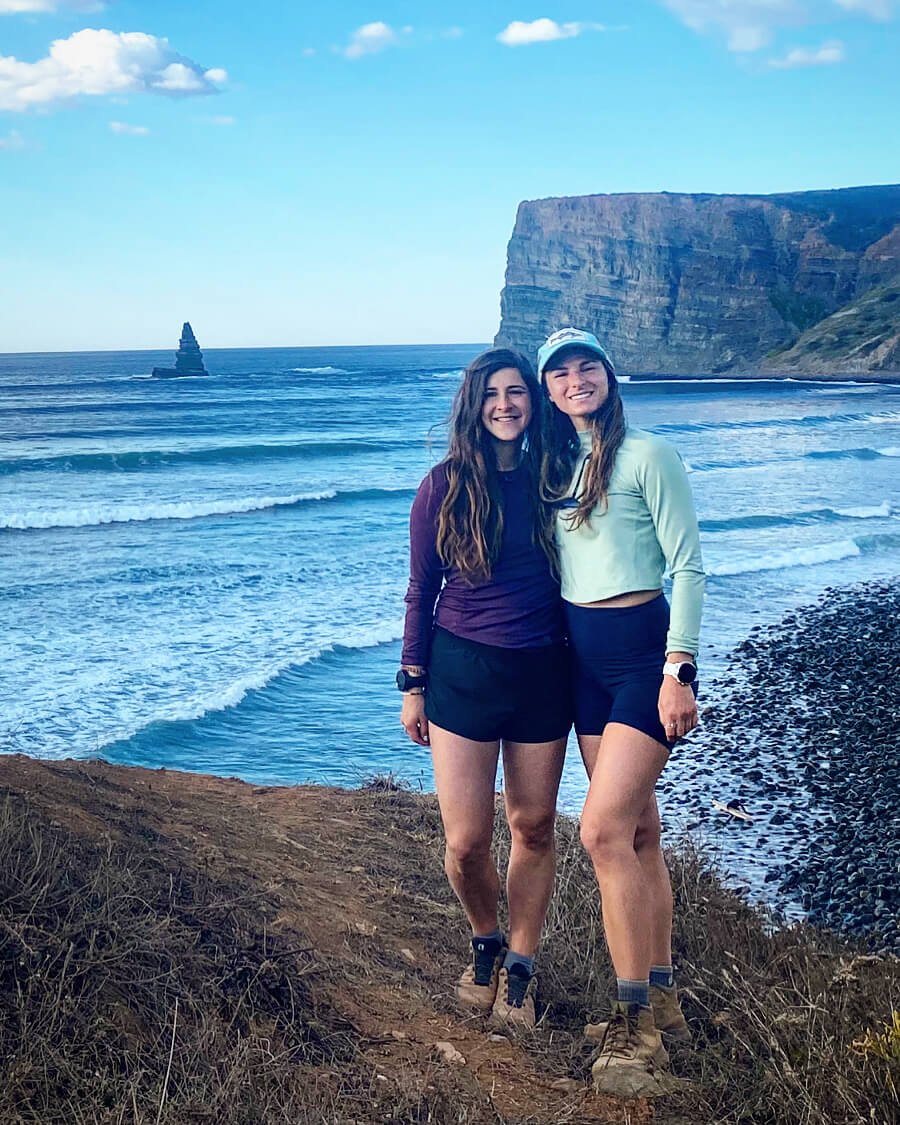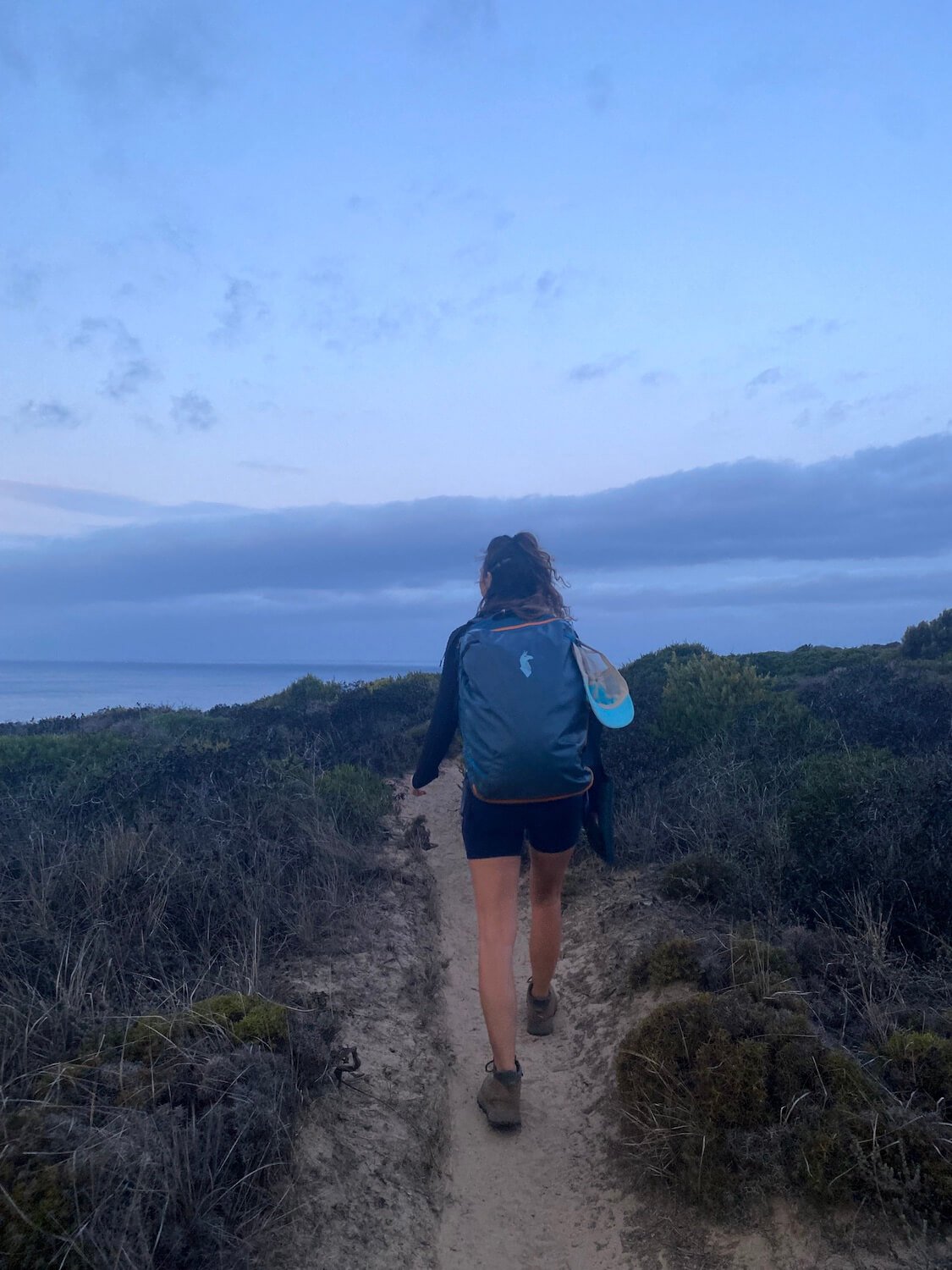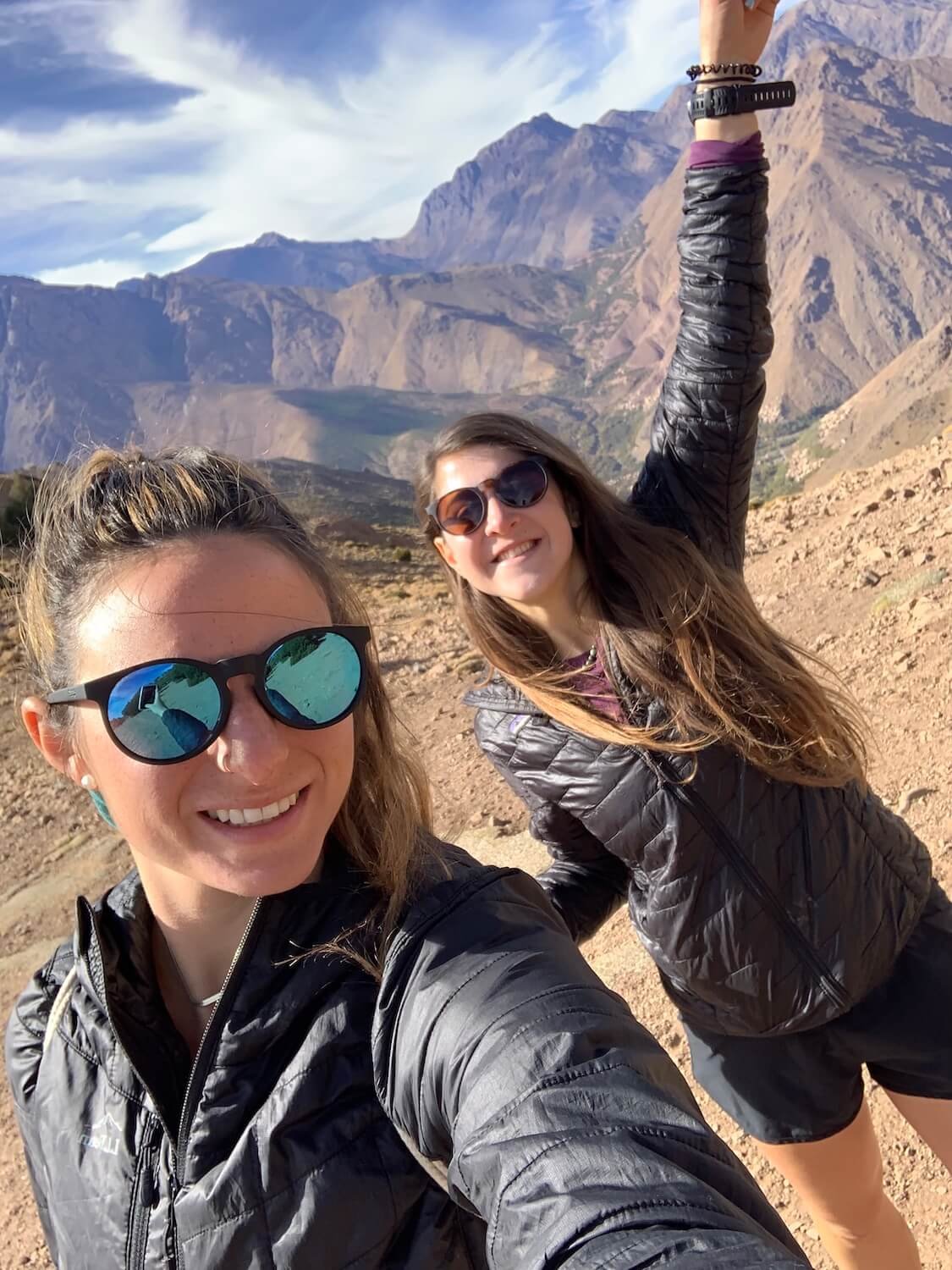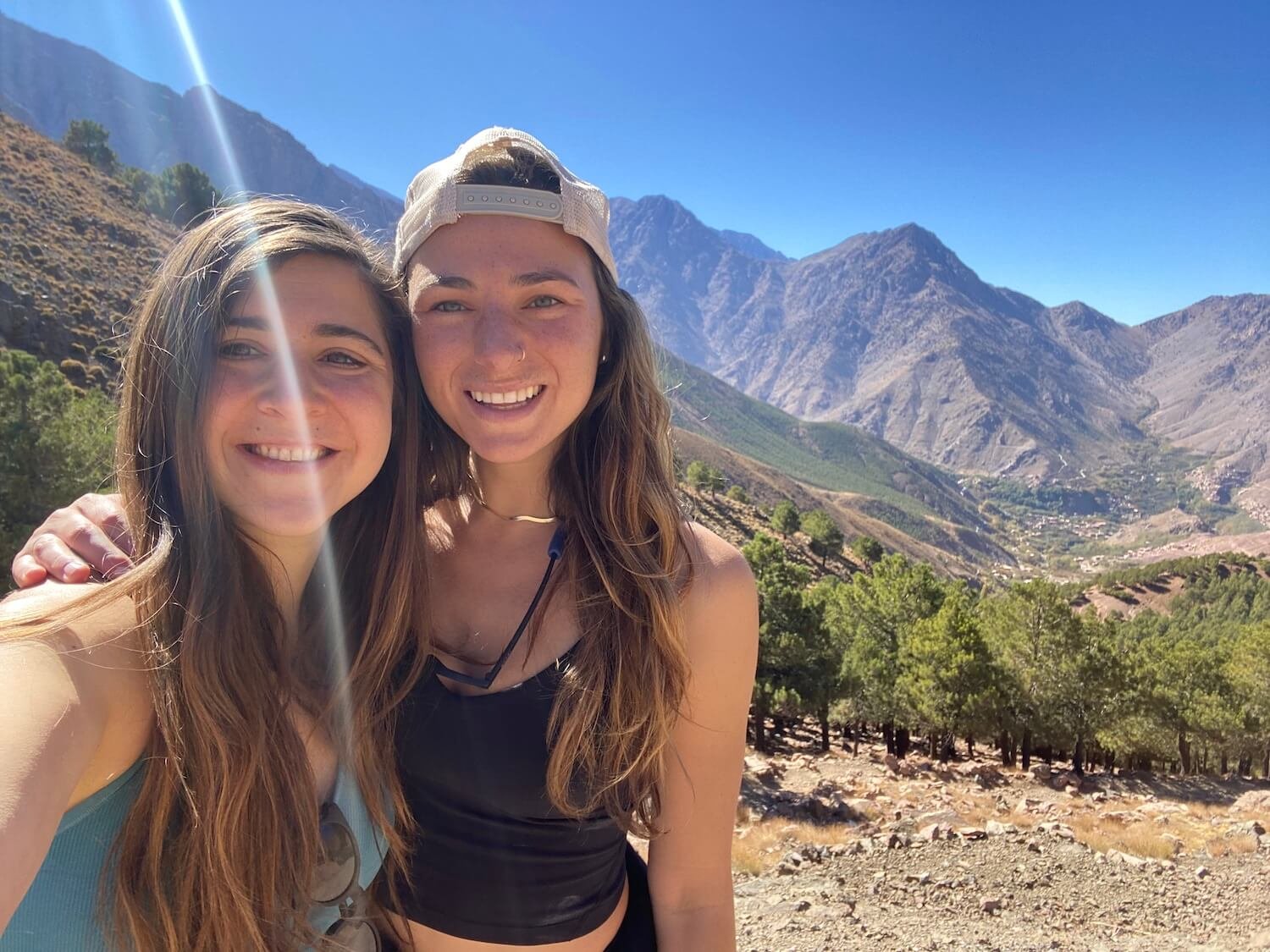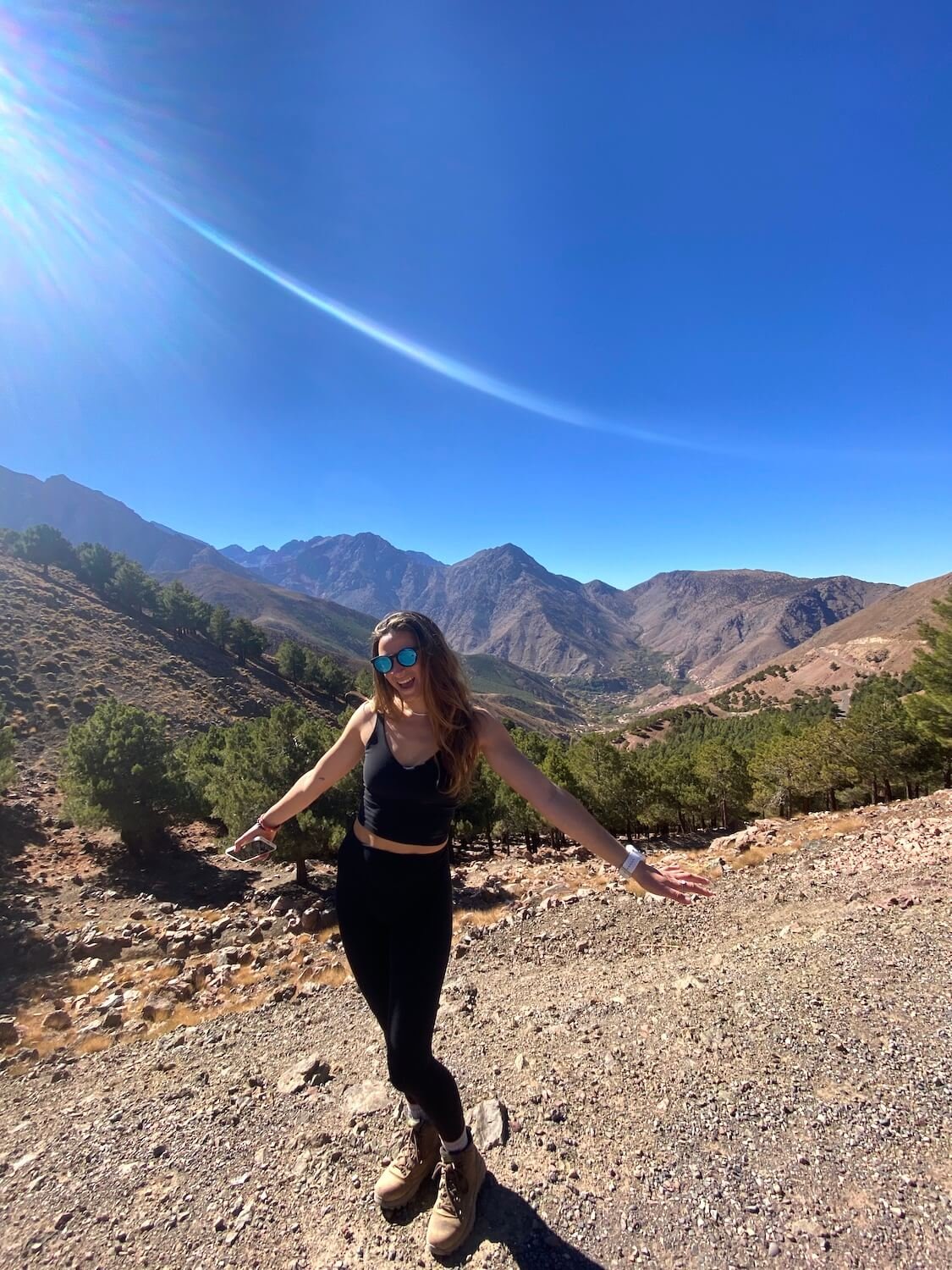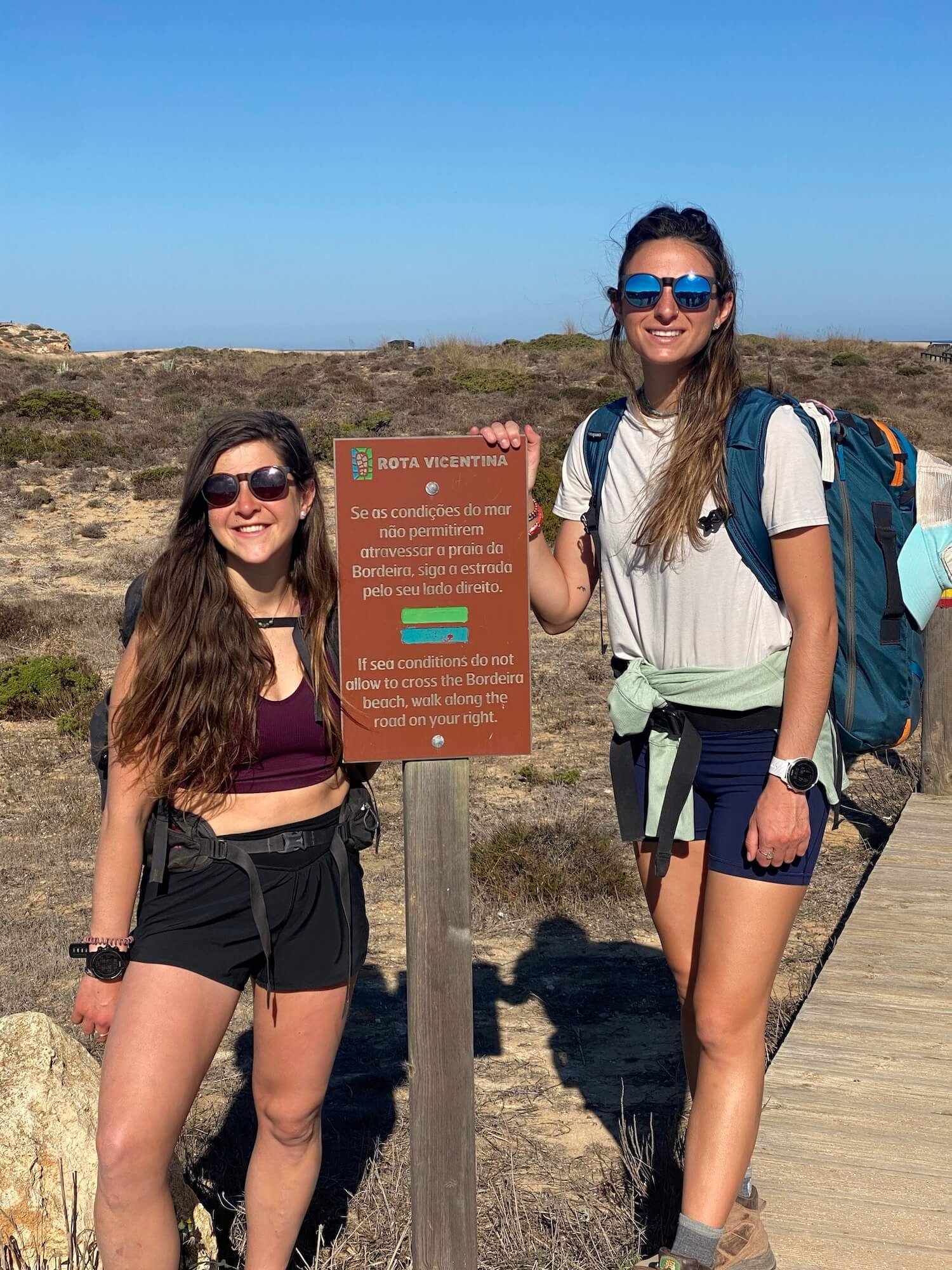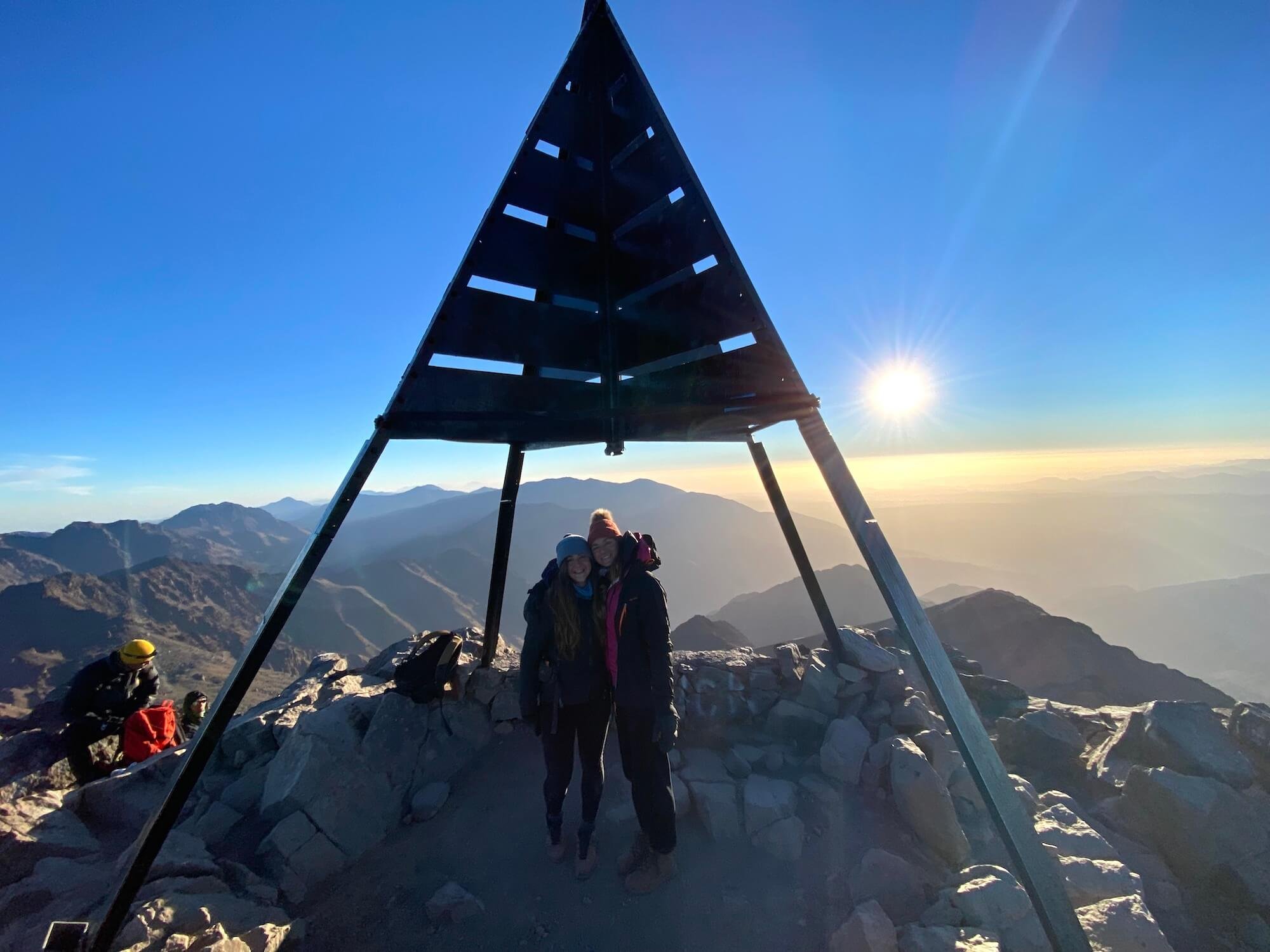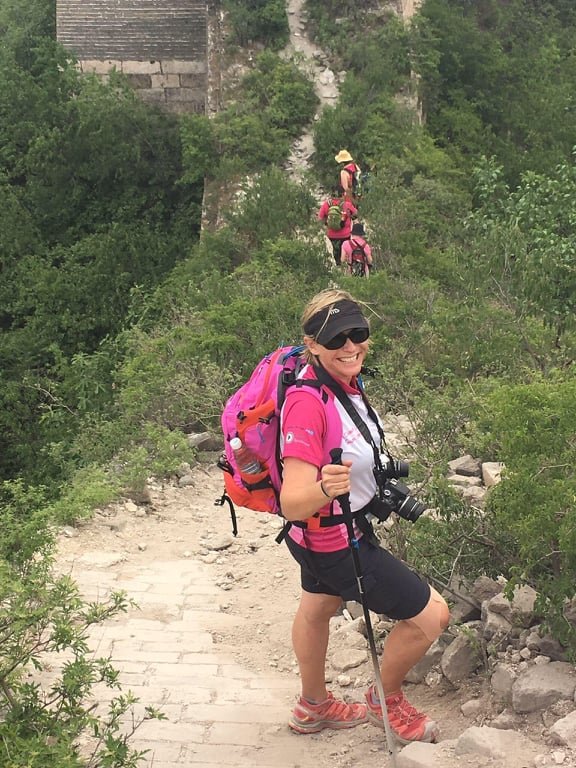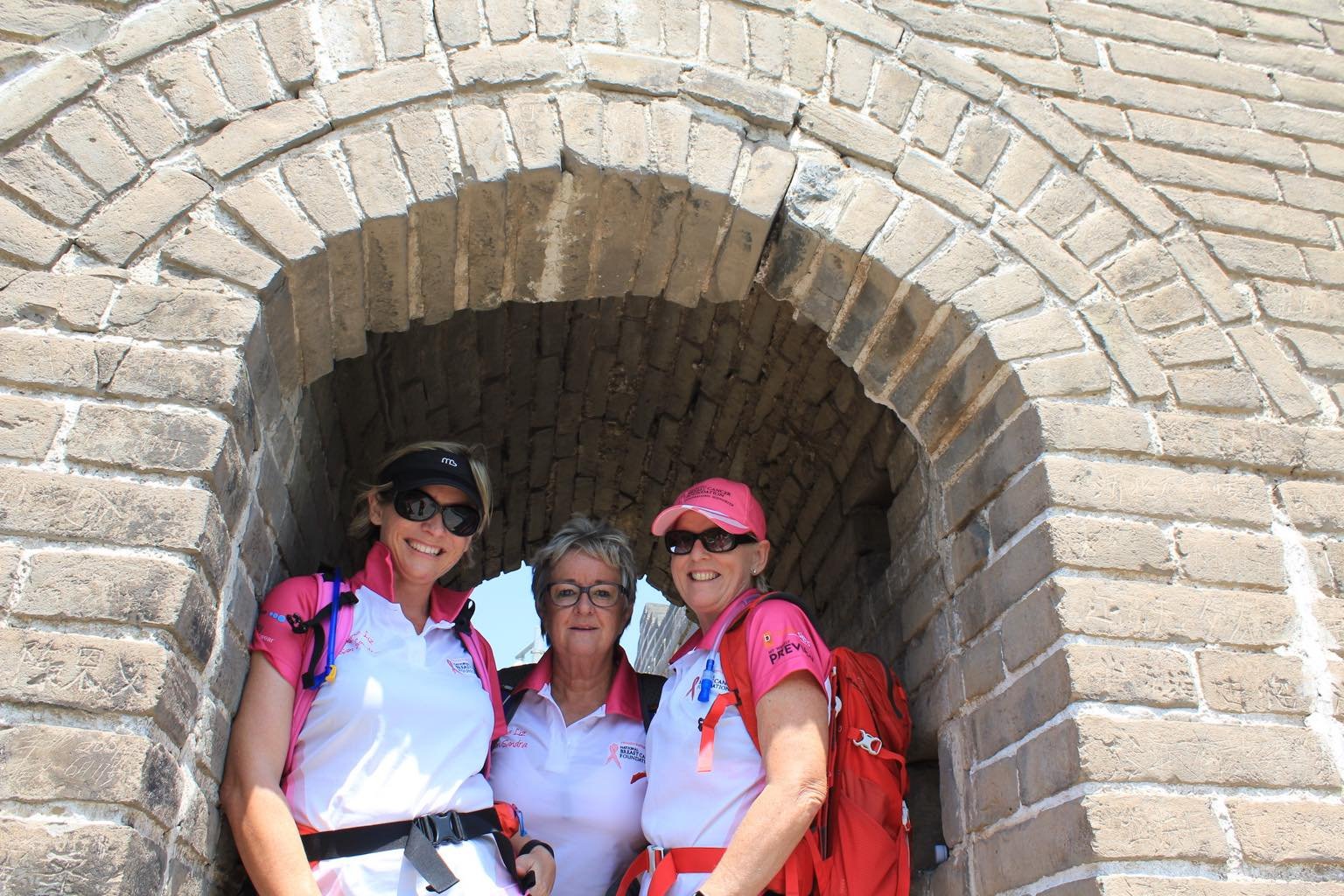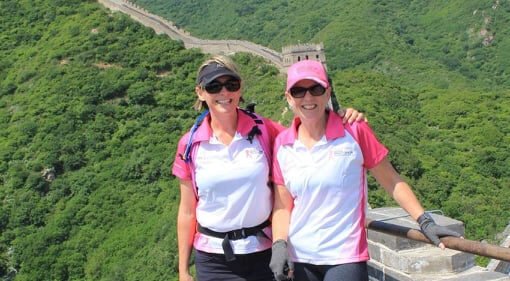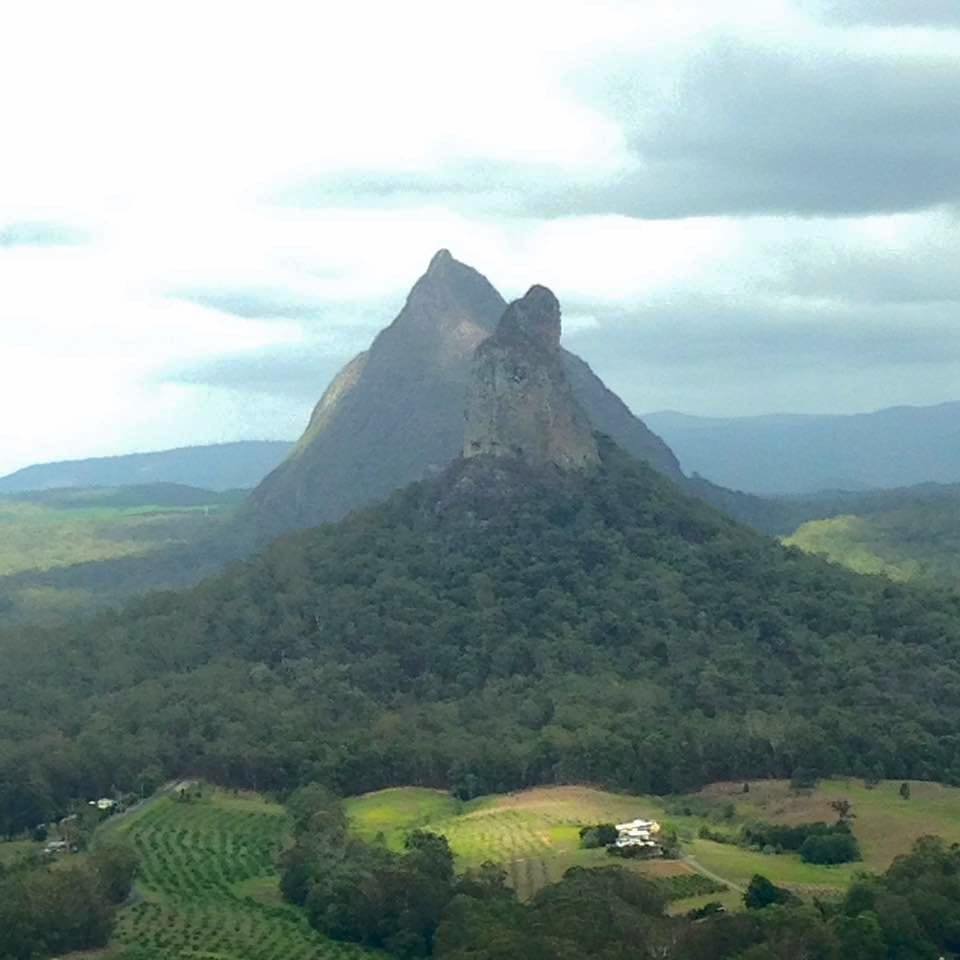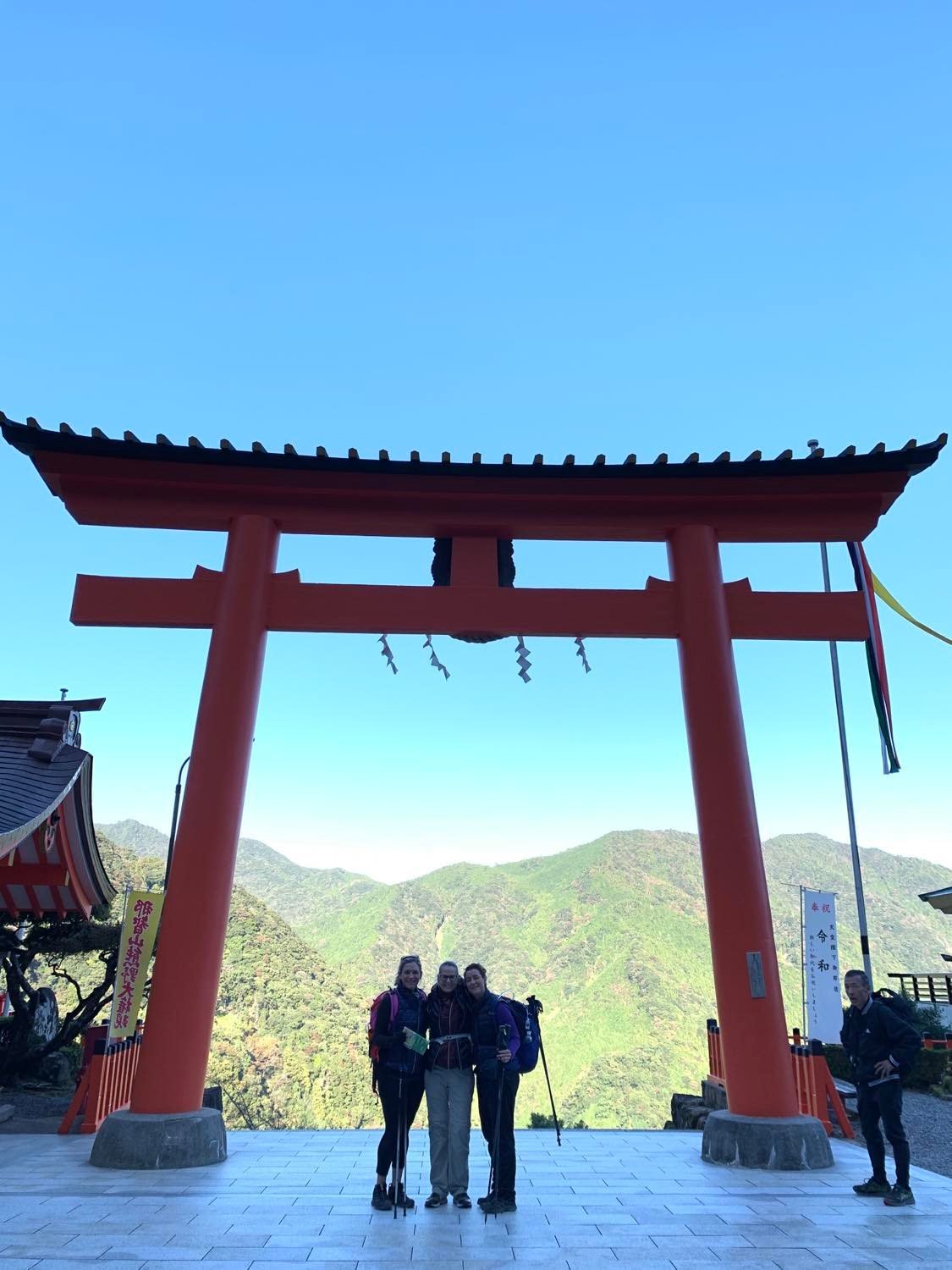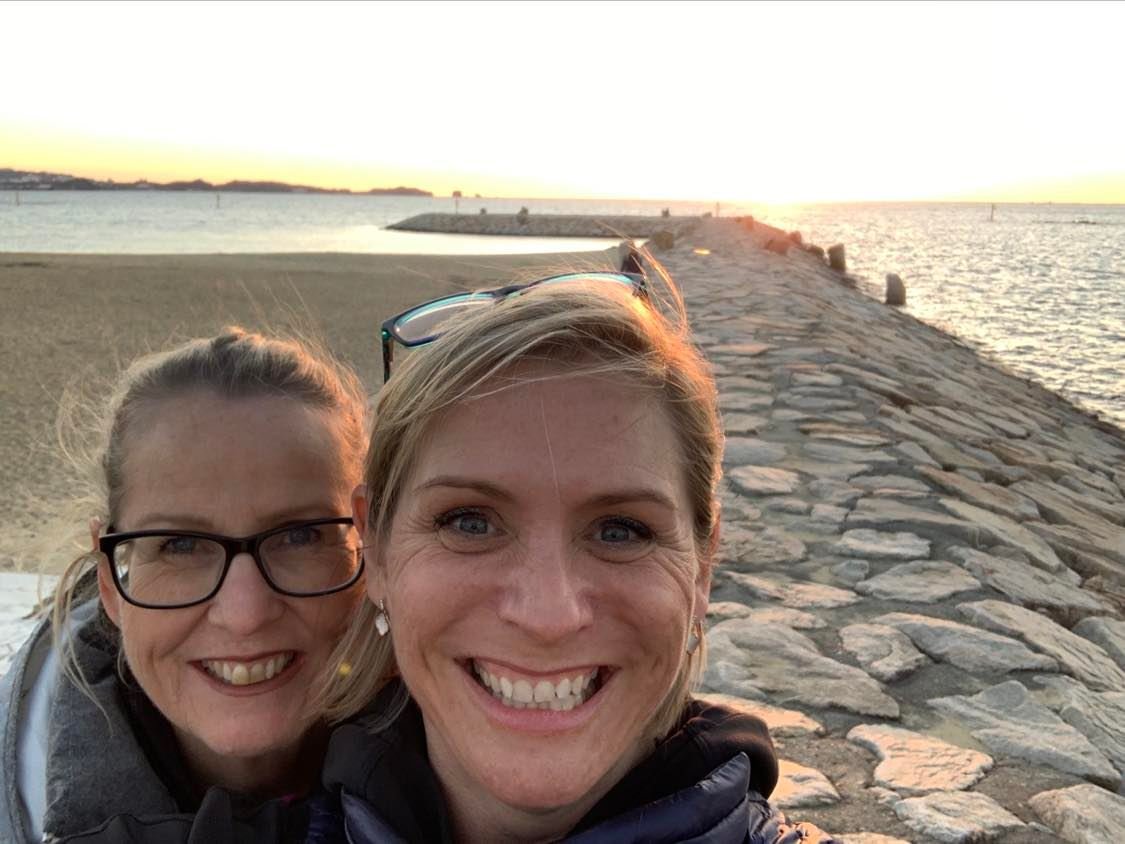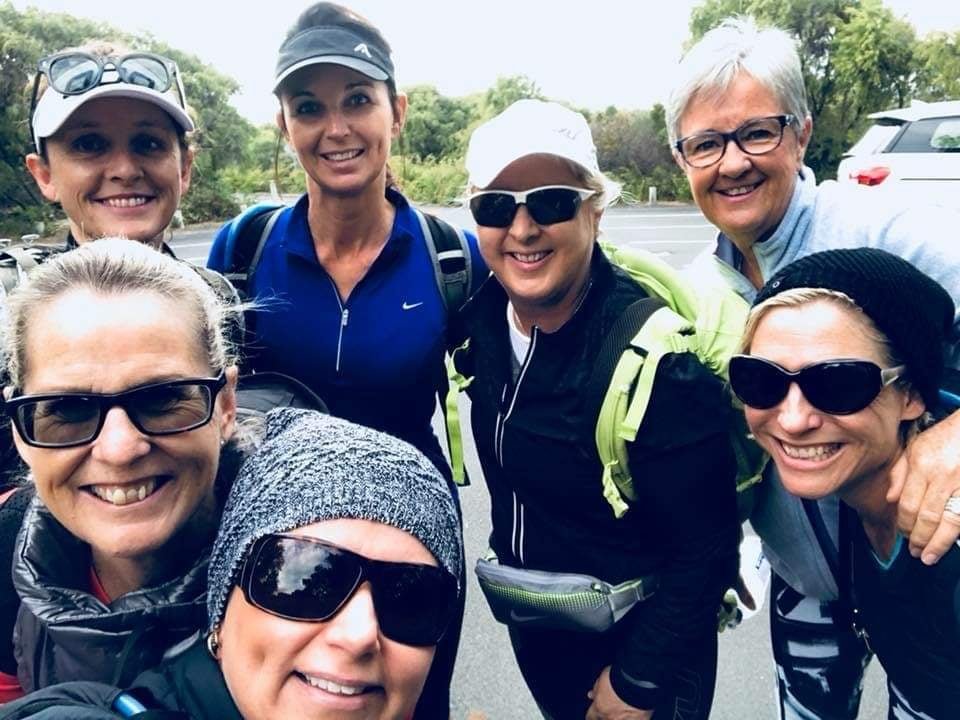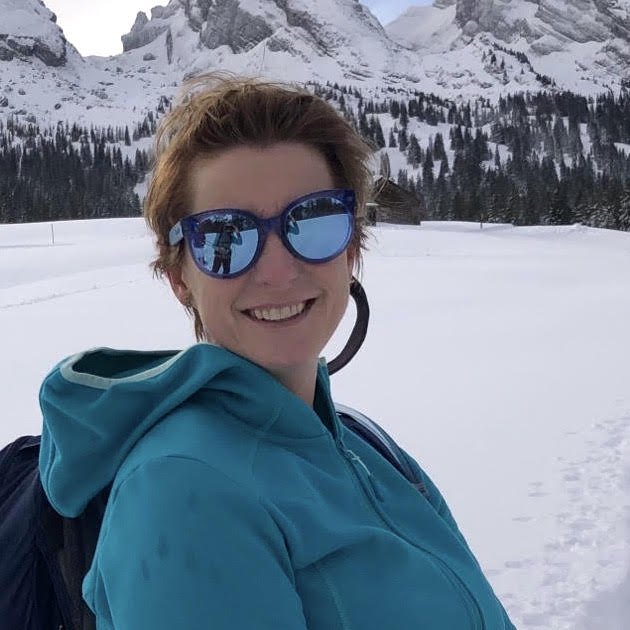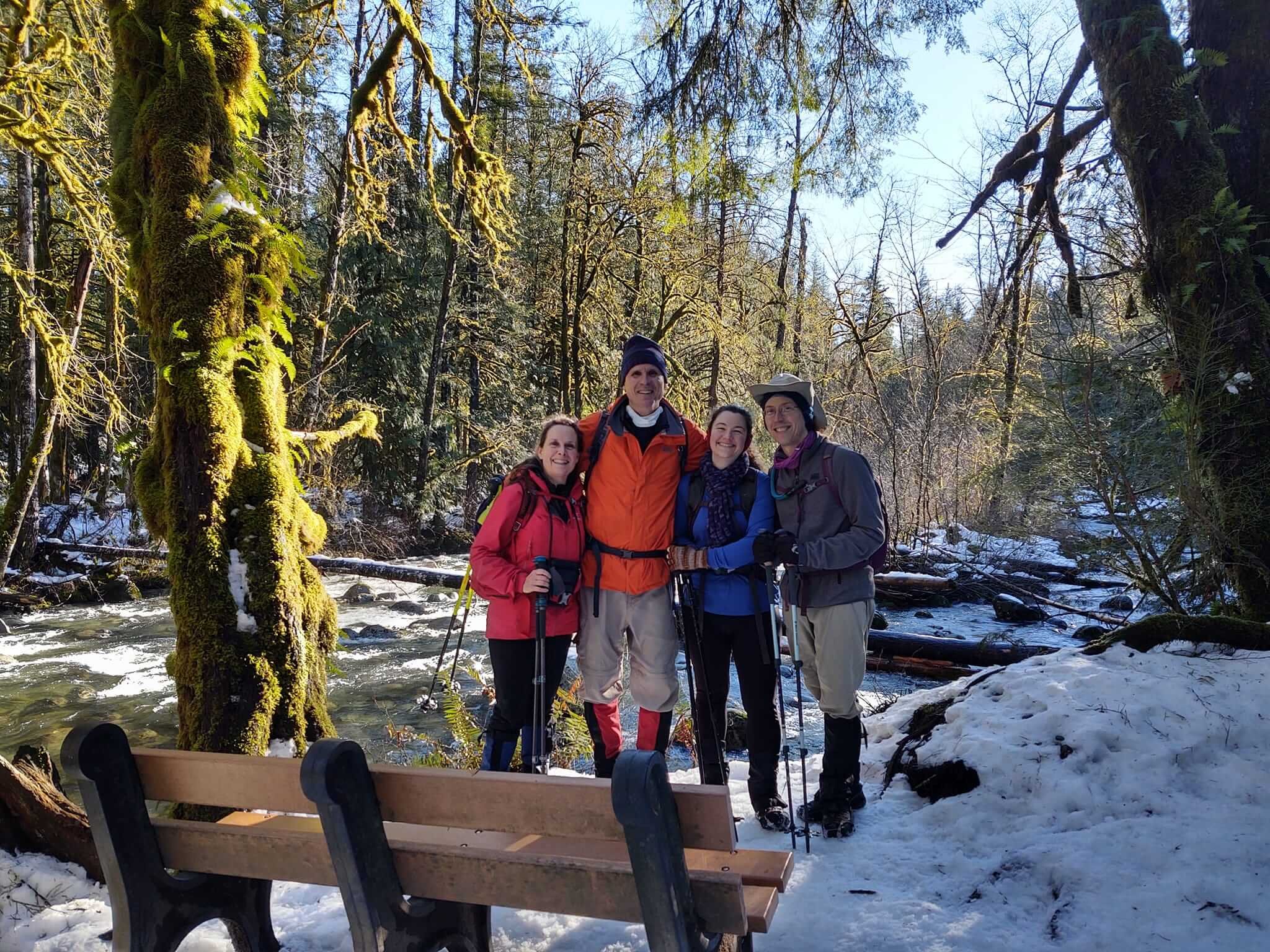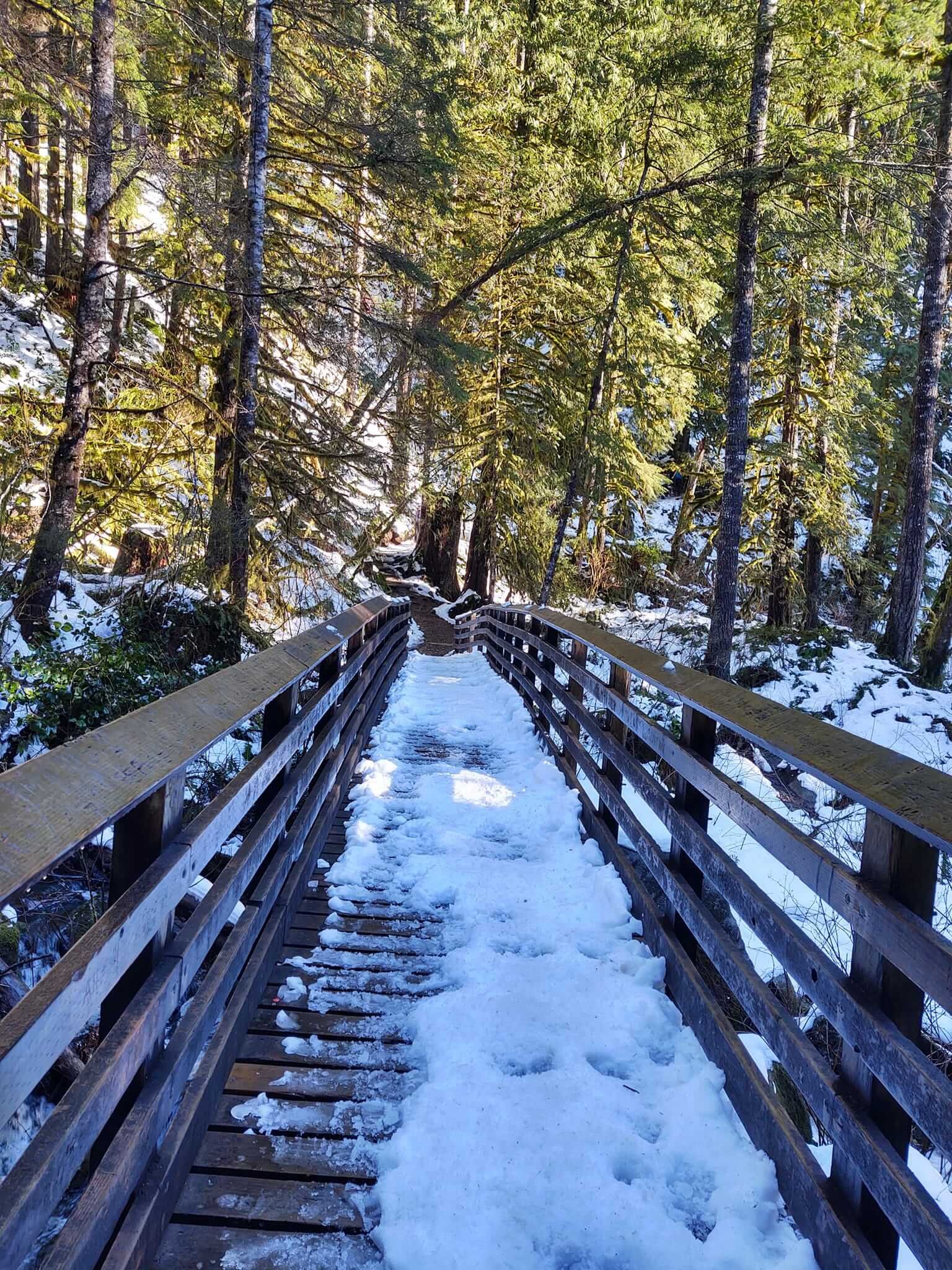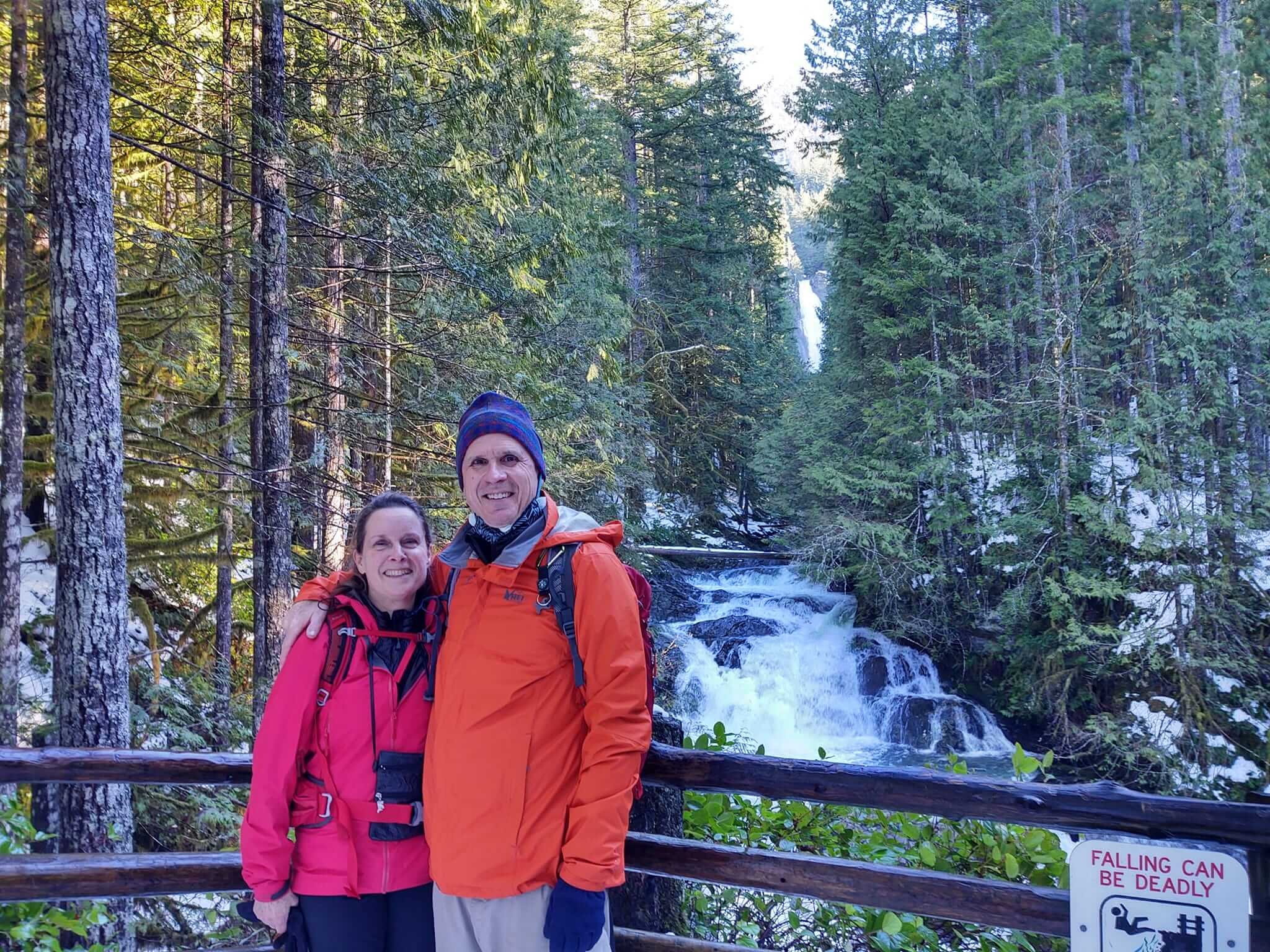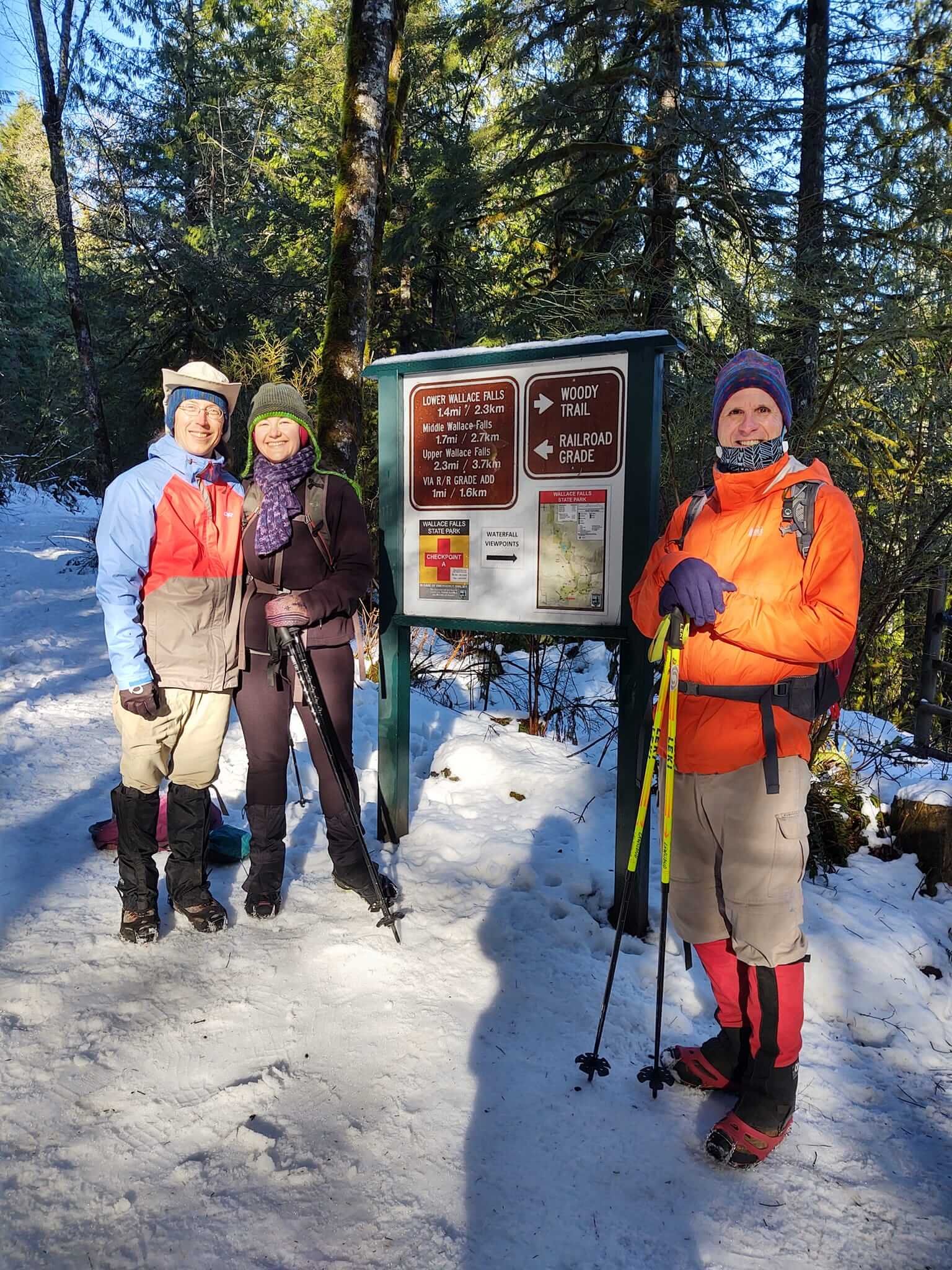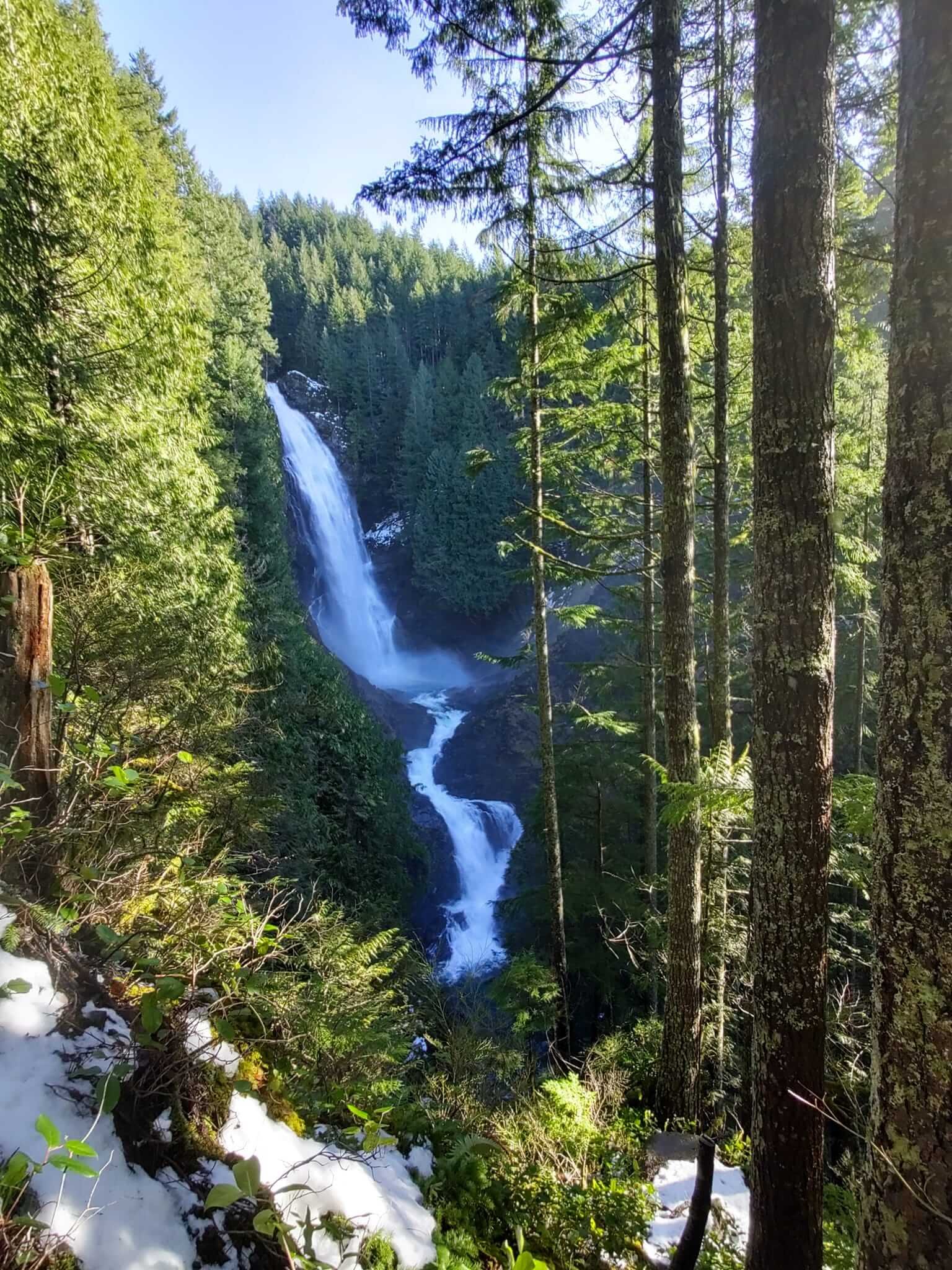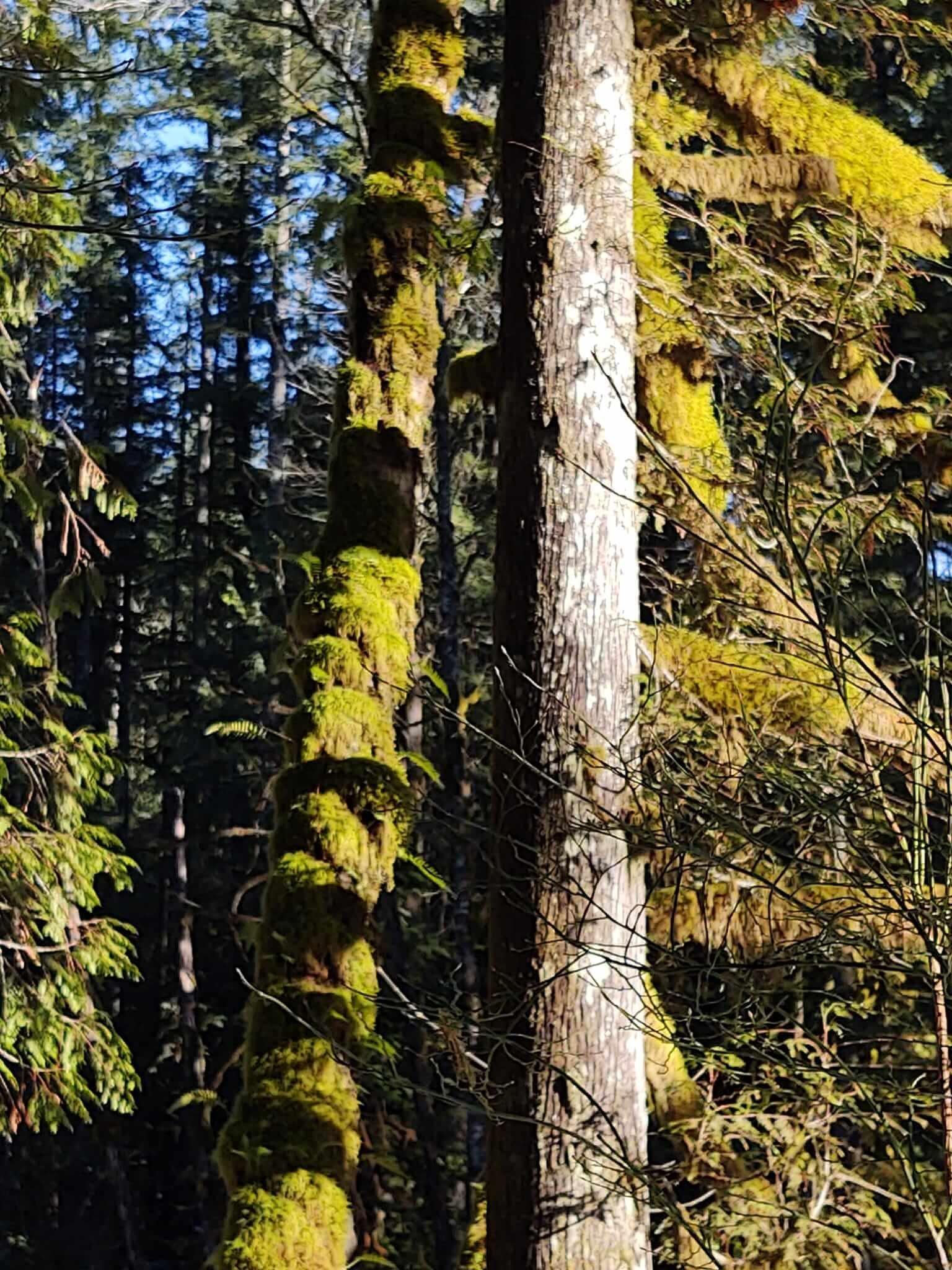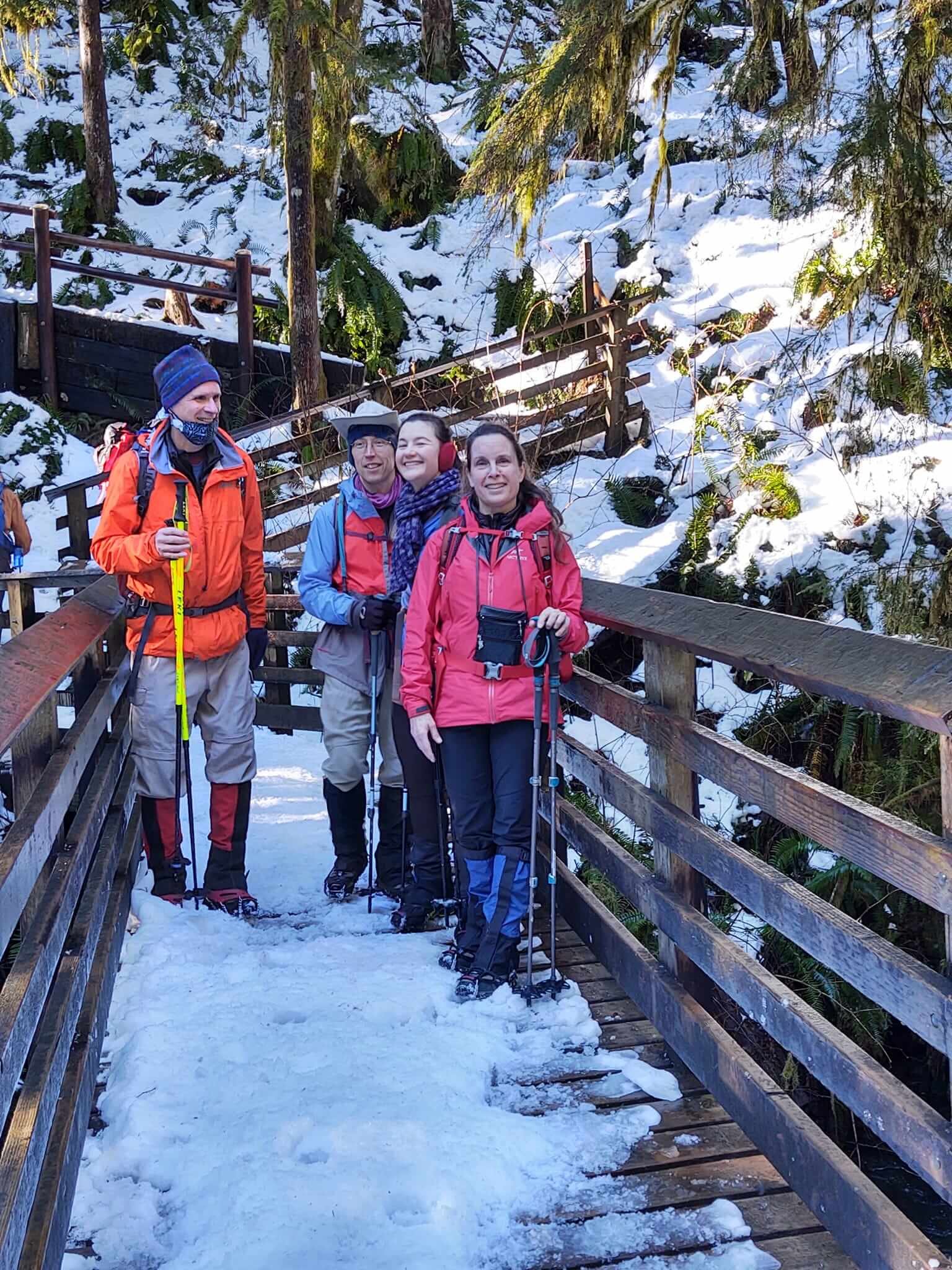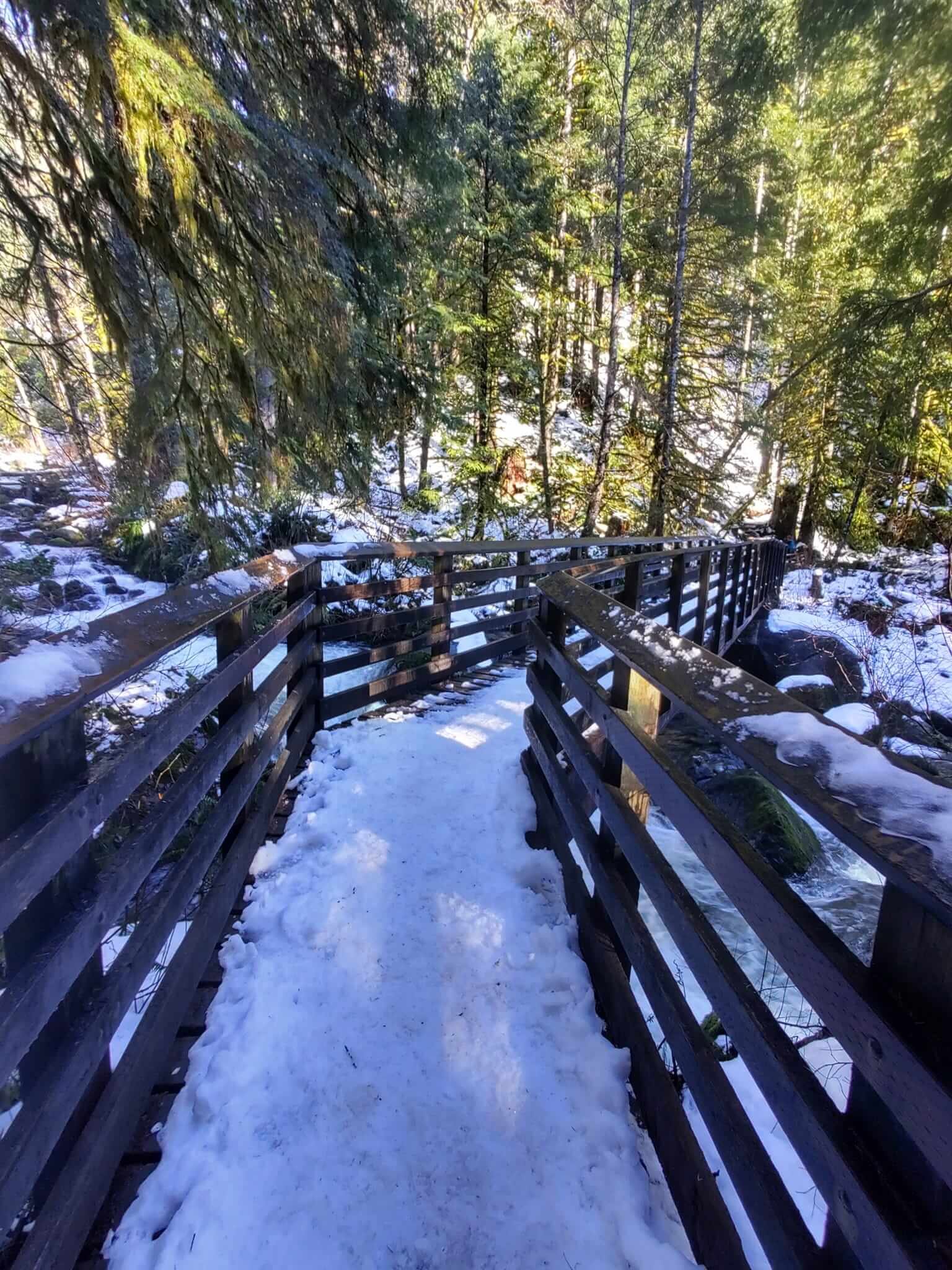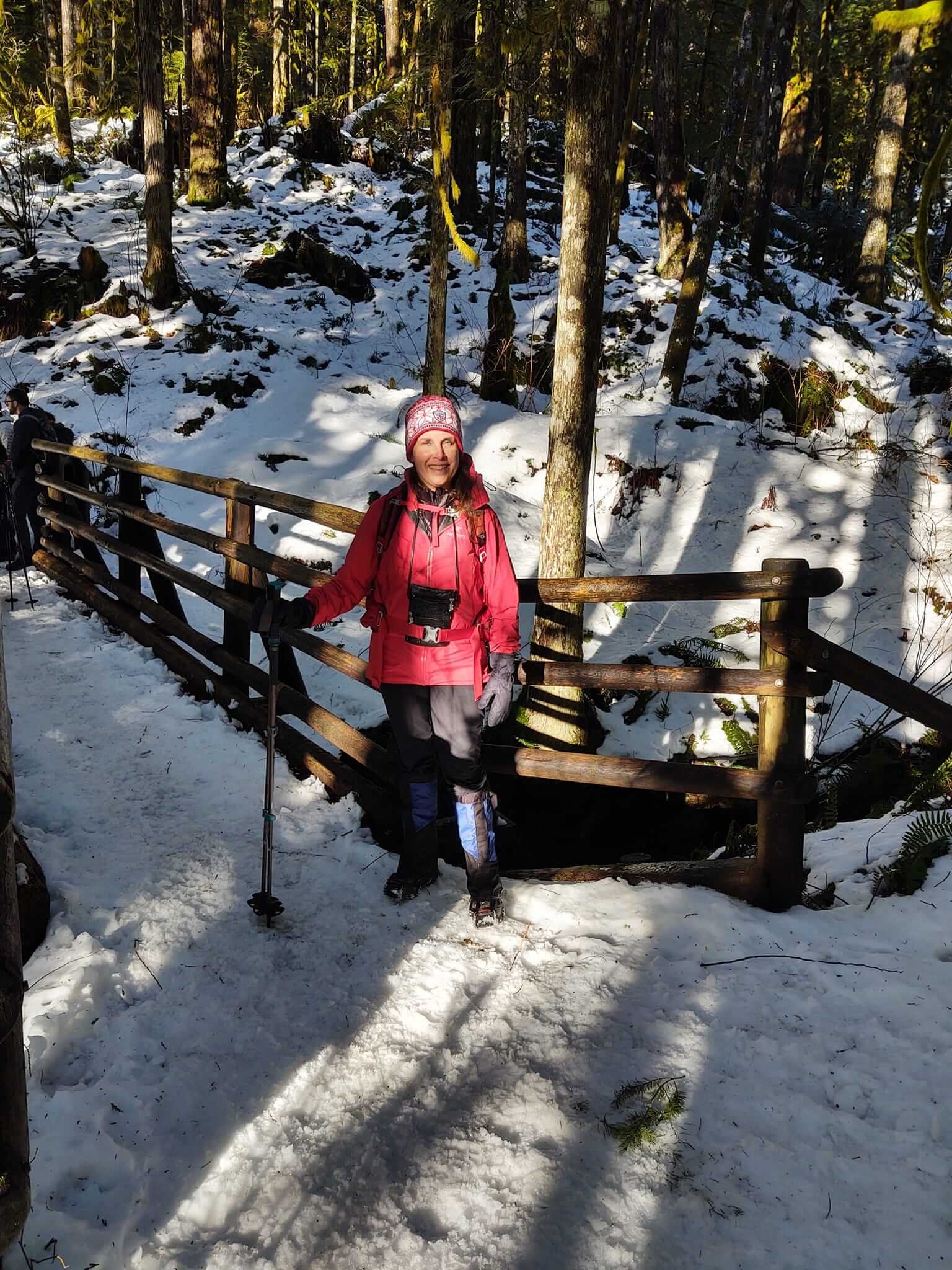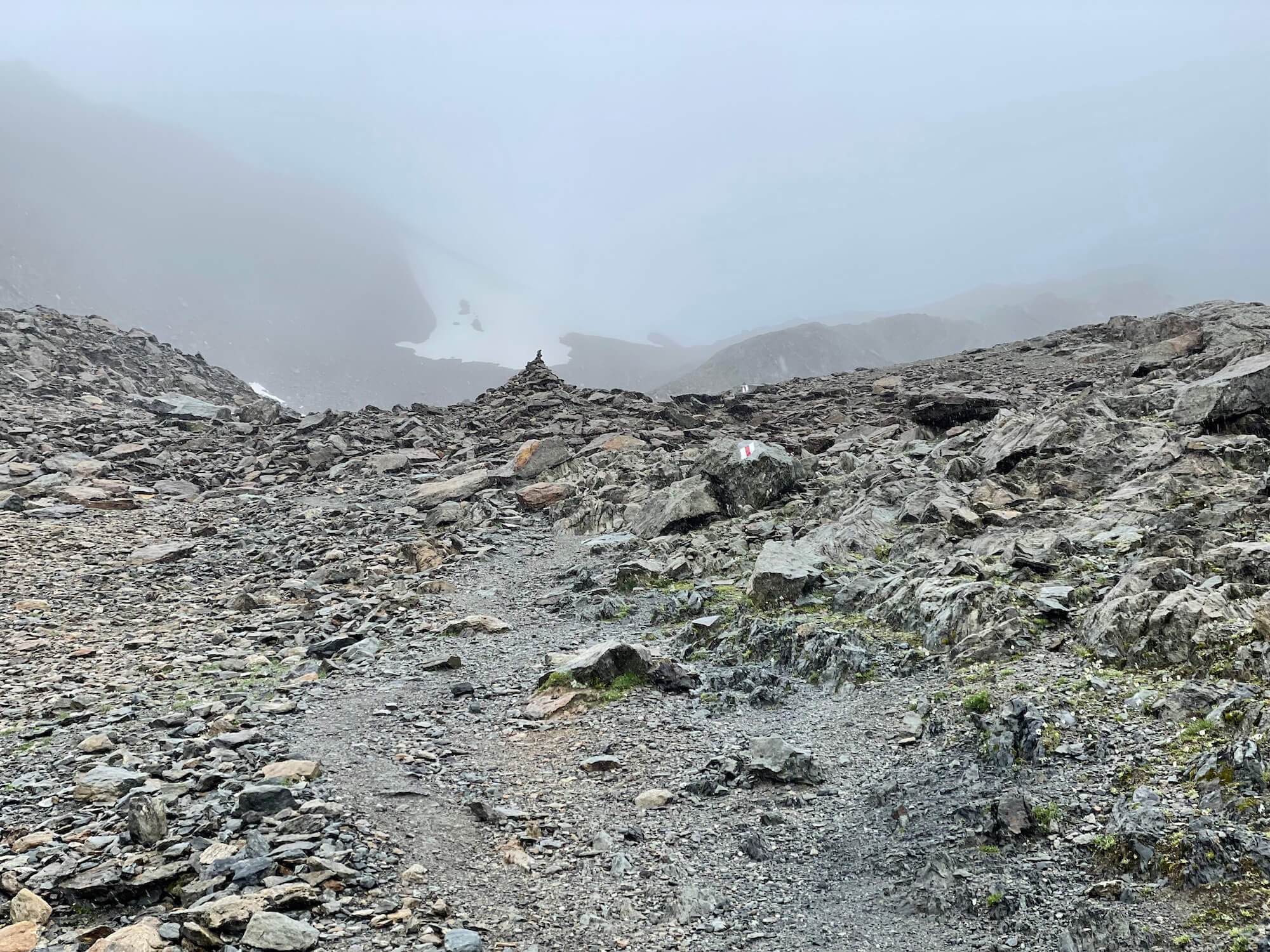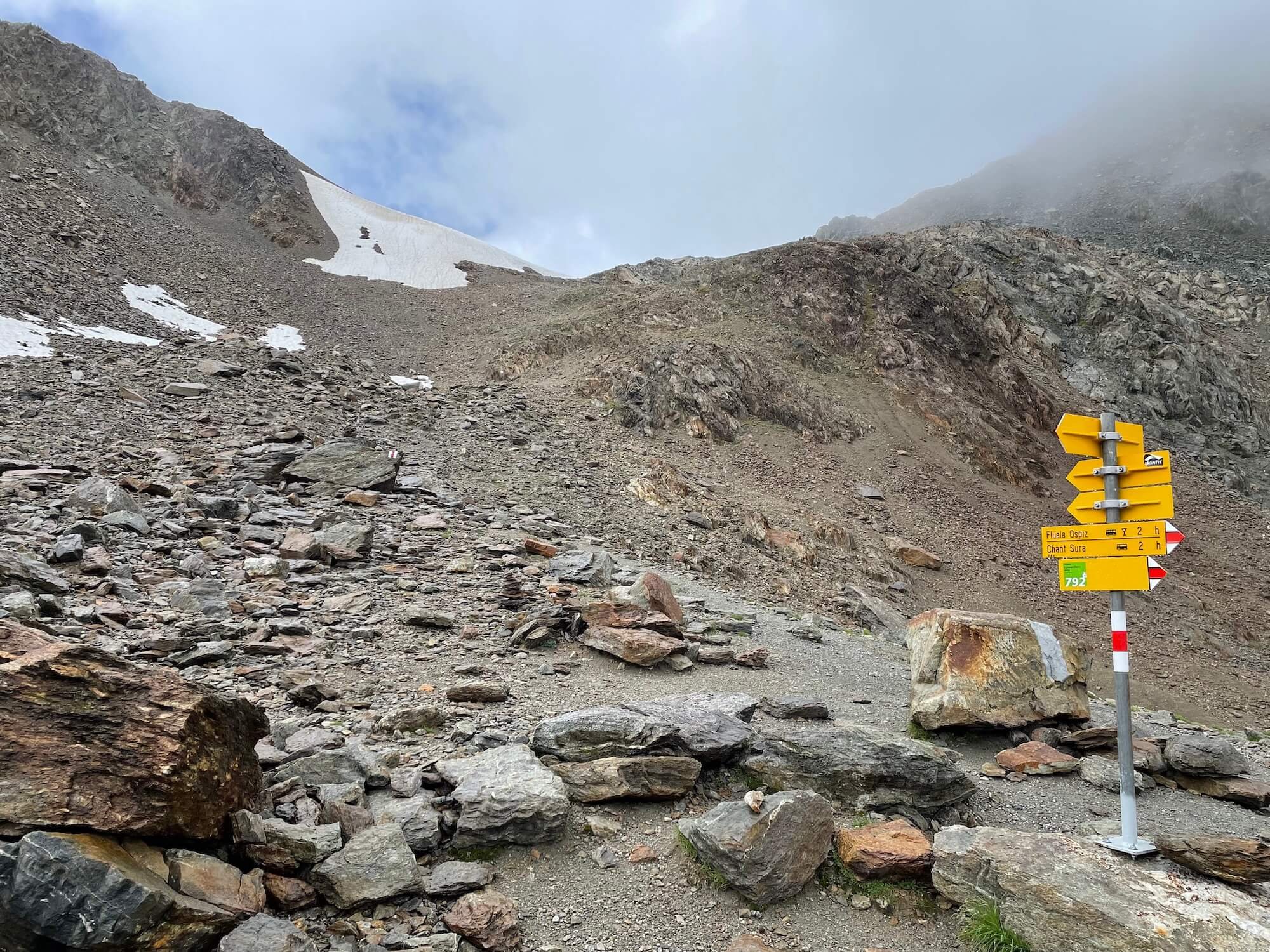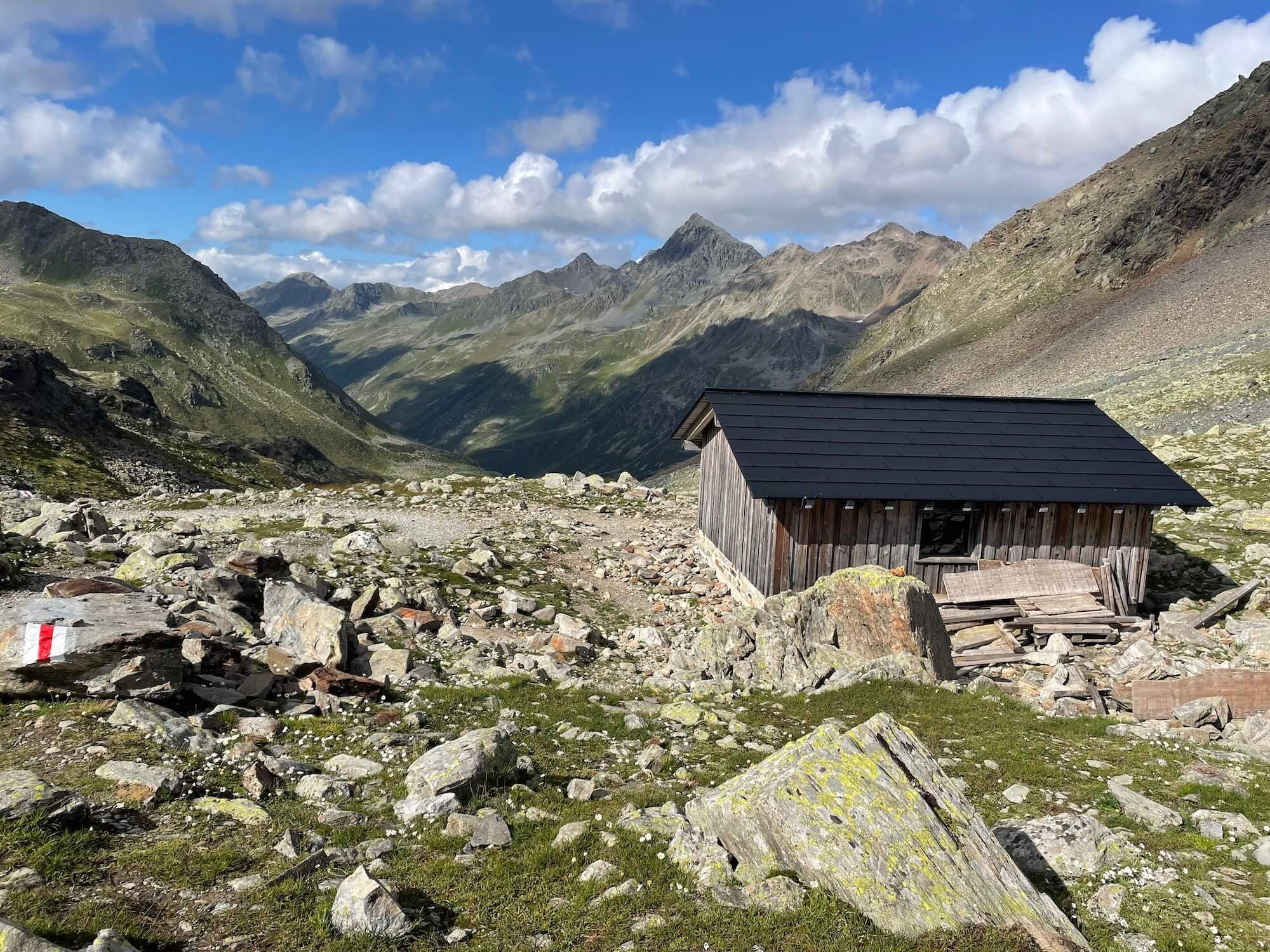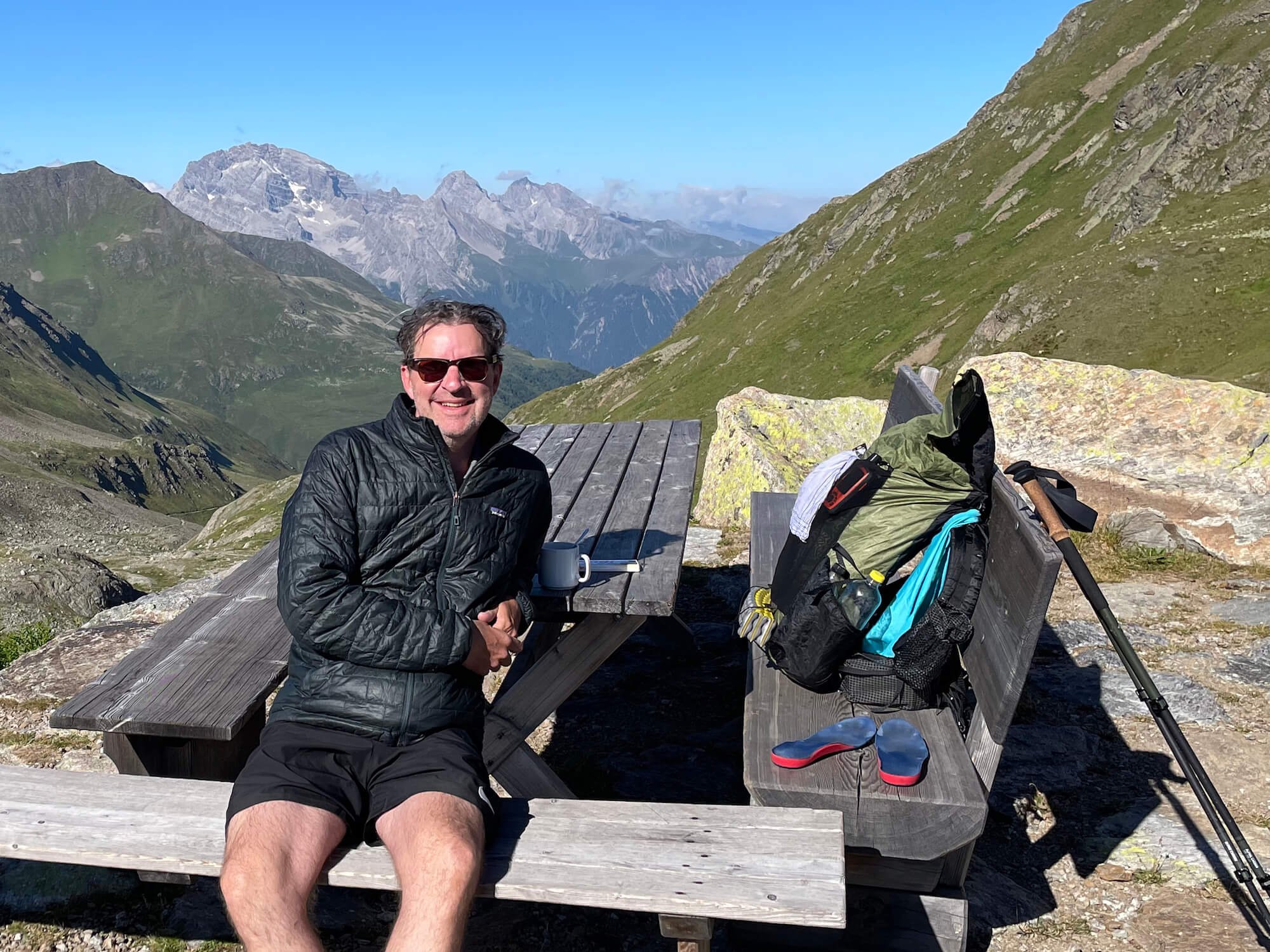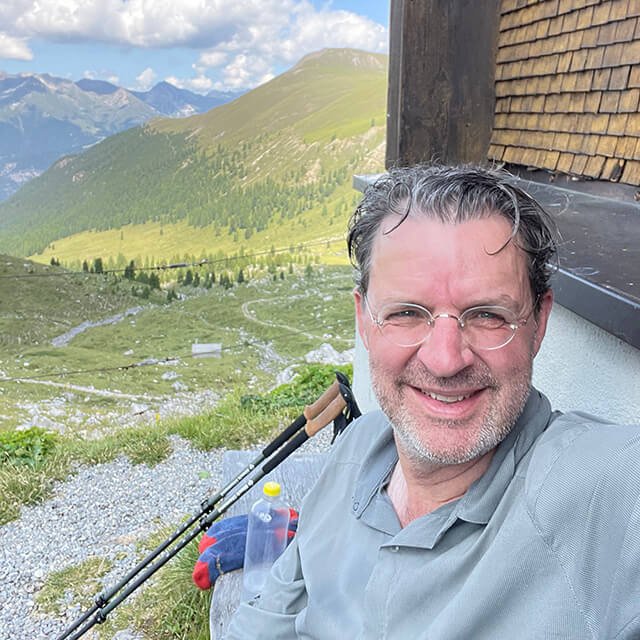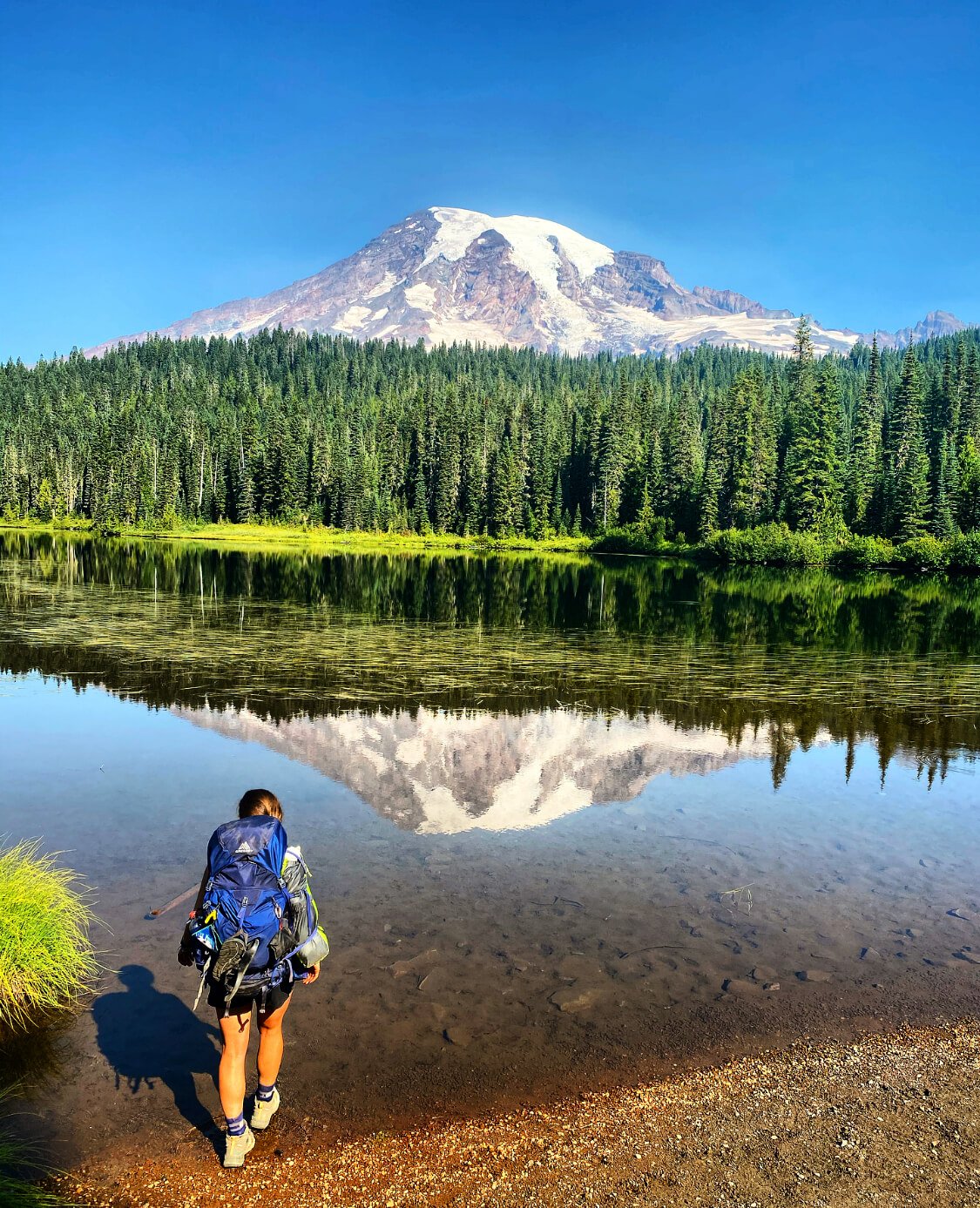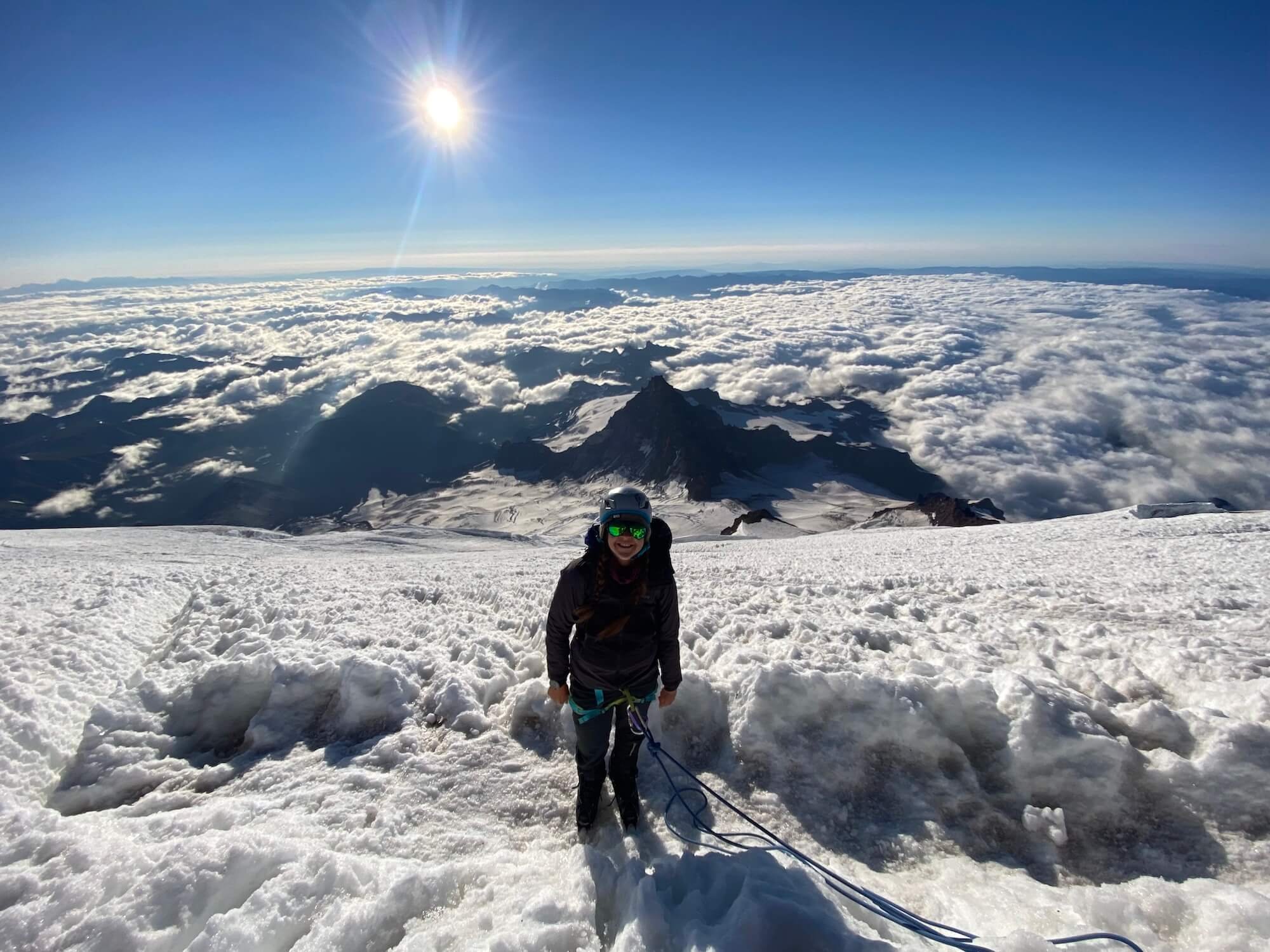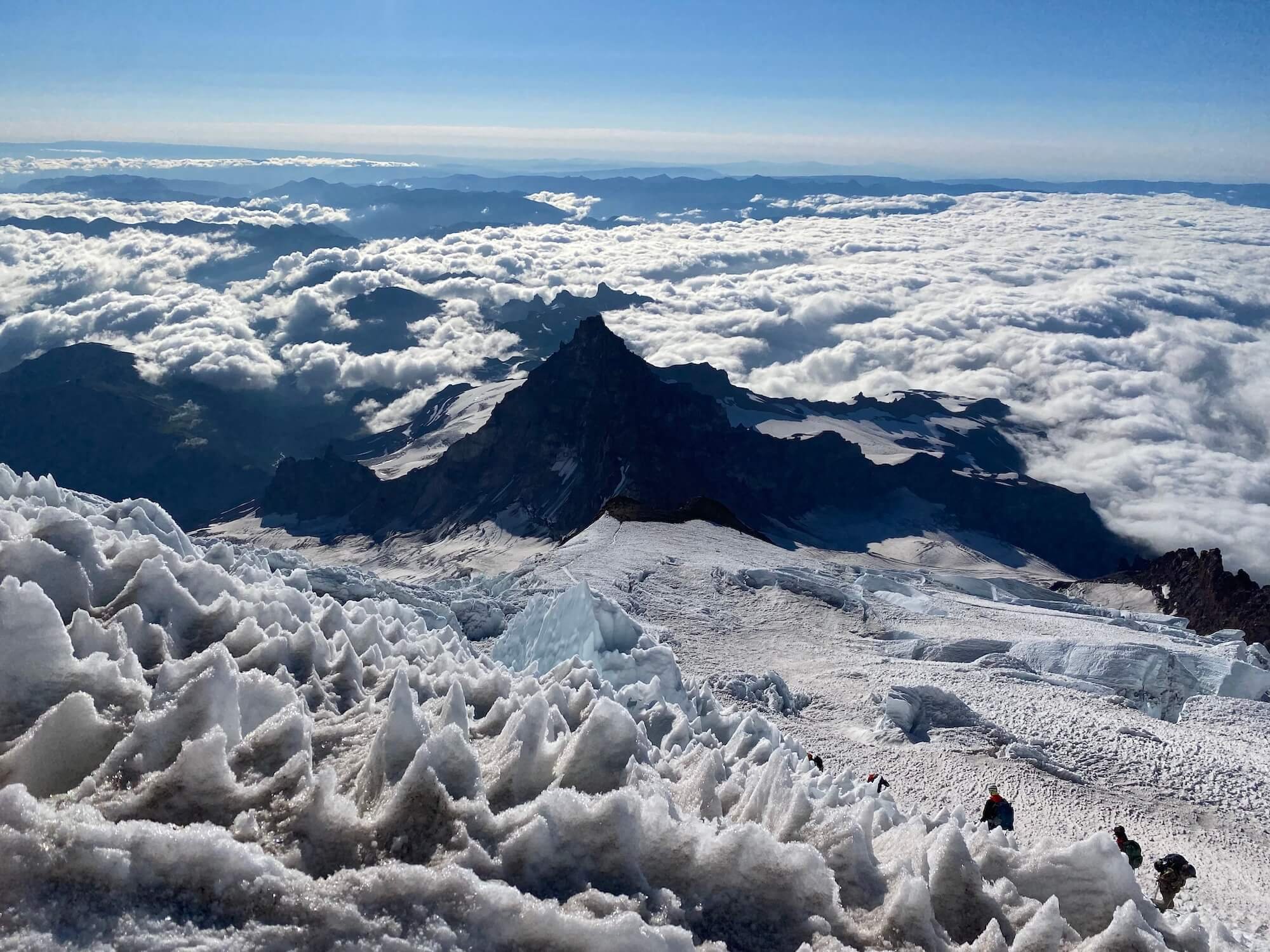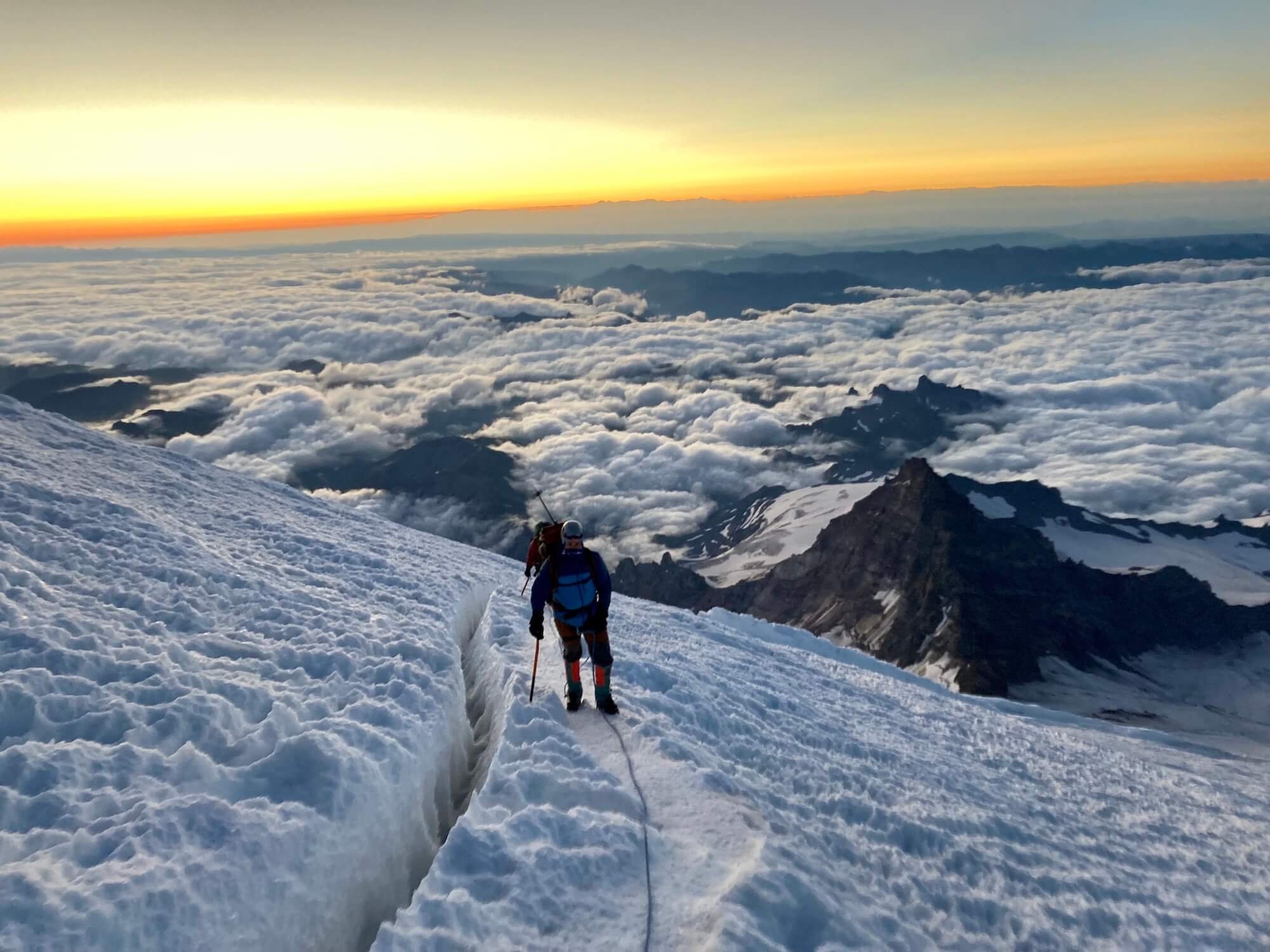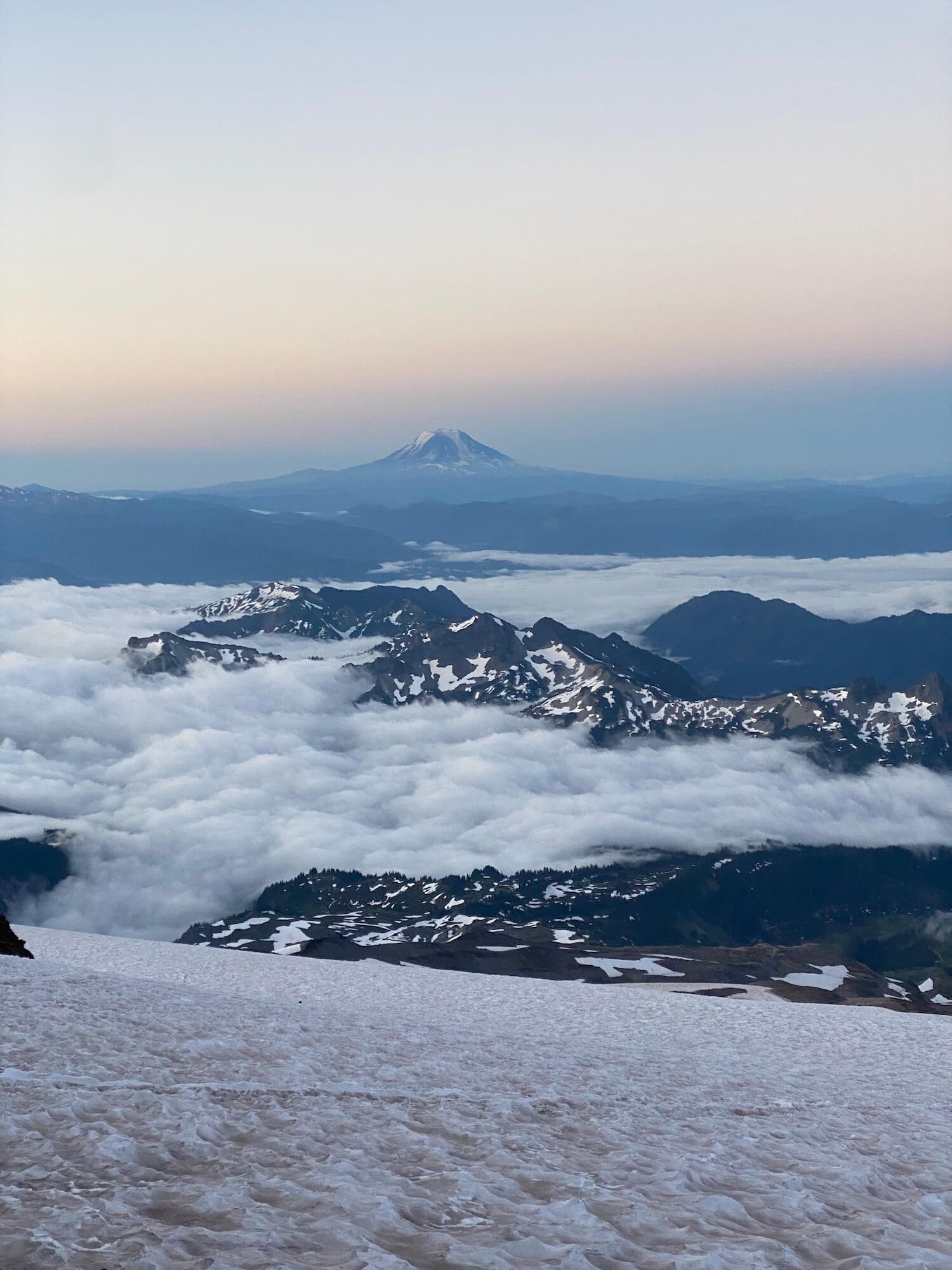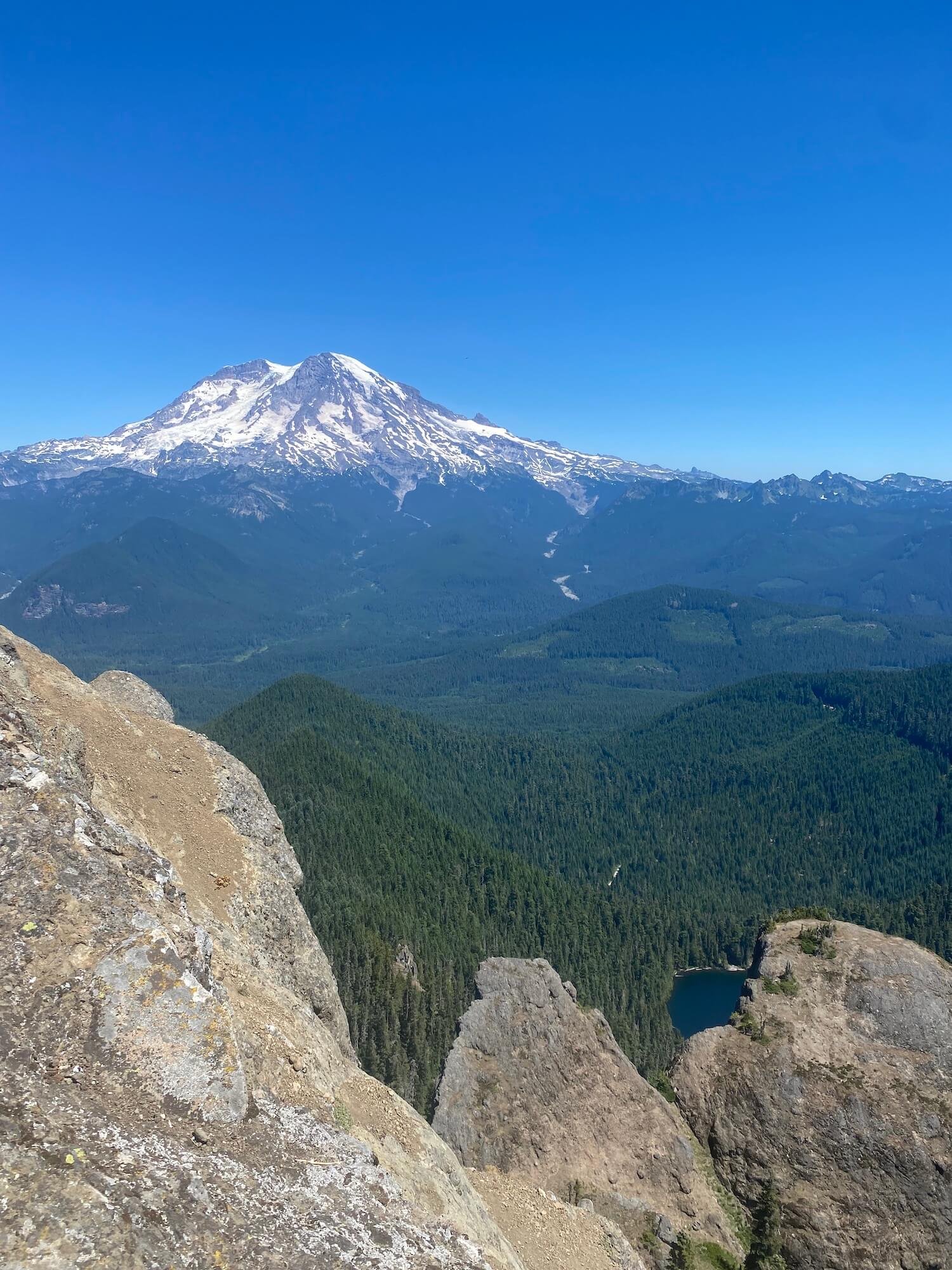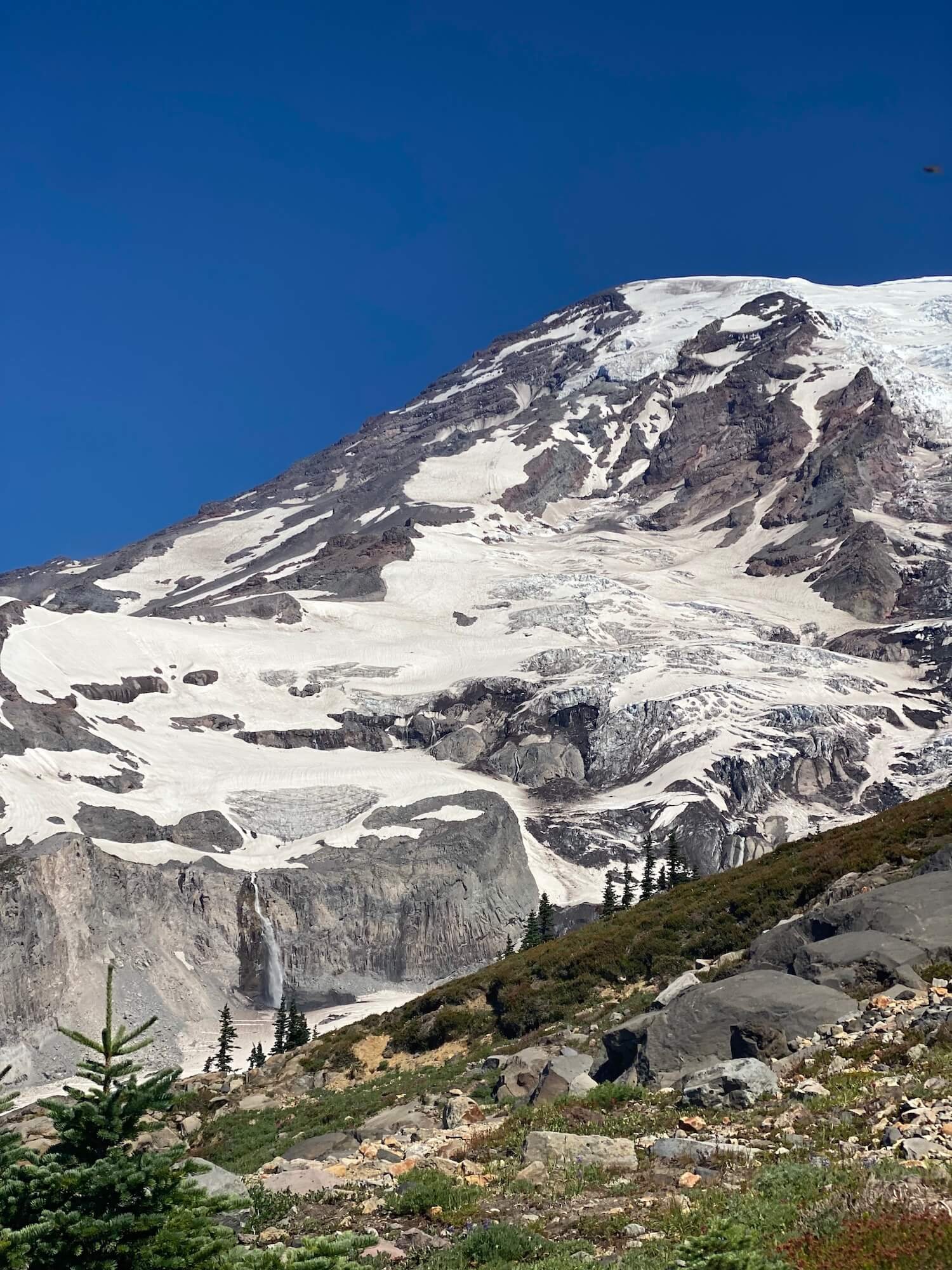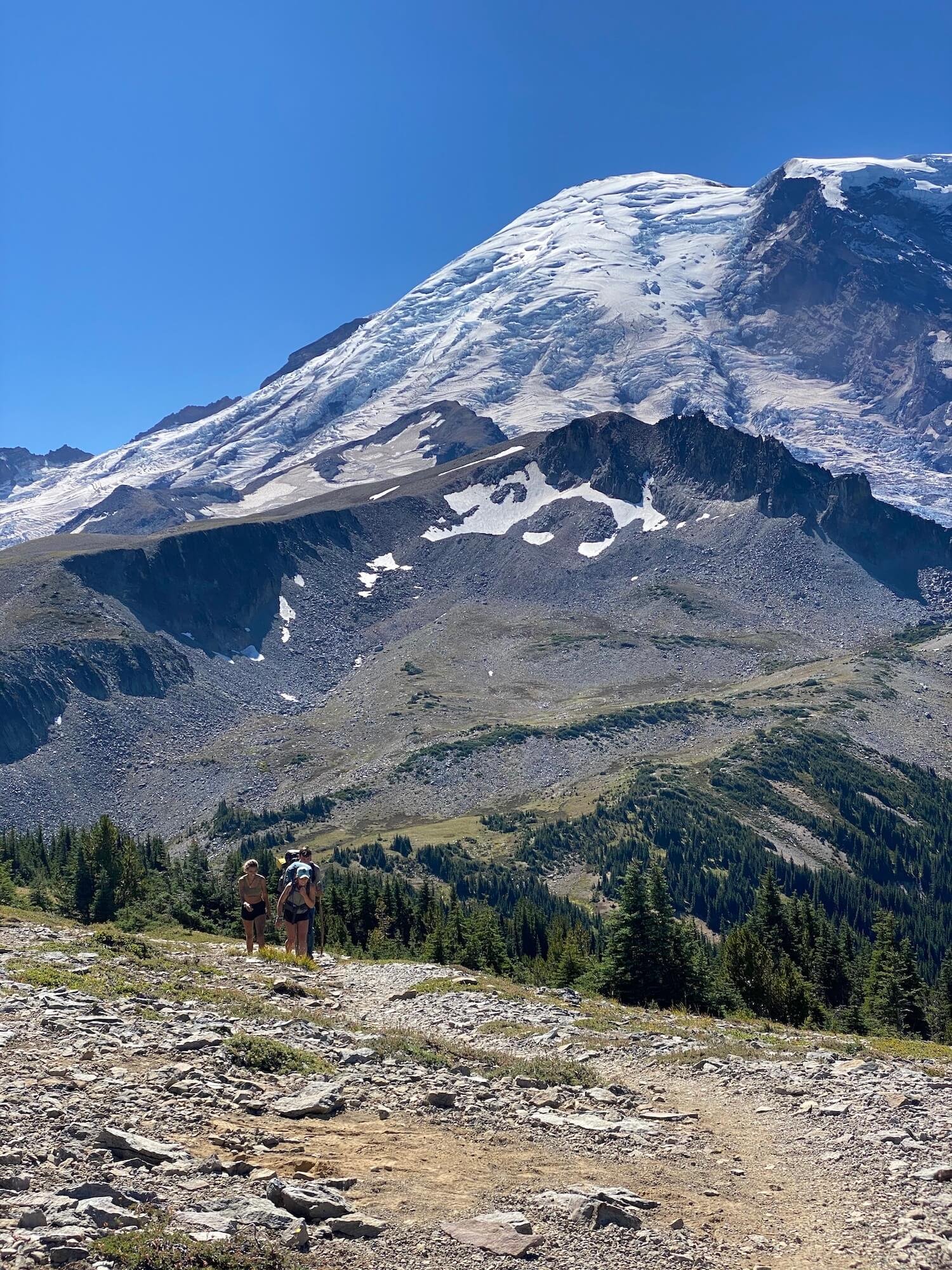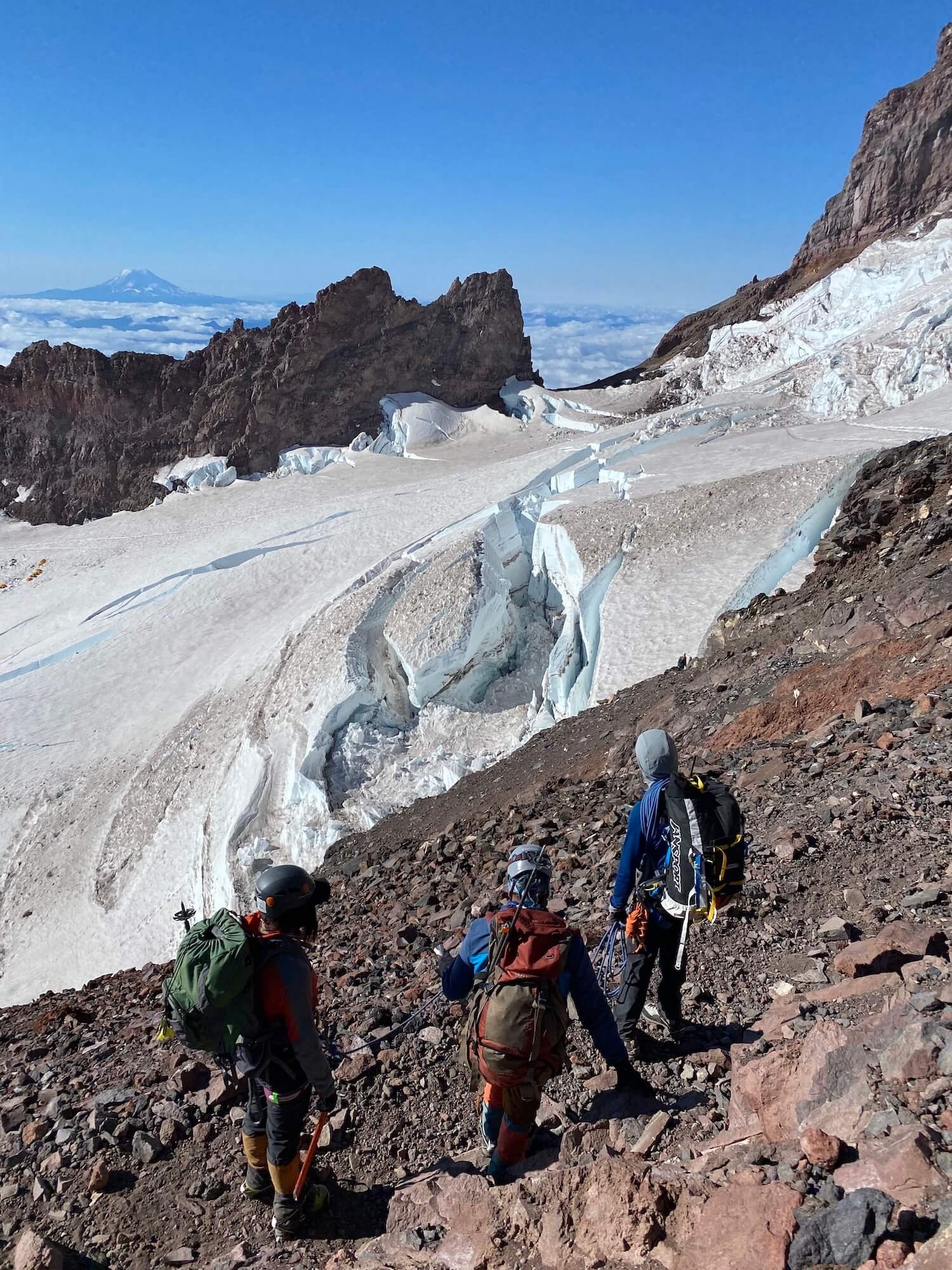The Smith family hiked the full circuit of the Tour du Mont Blanc in July 2024, staying in gites, mountain huts, and hotels. They carried everything they needed on their backs (there was no luggage transfer). Read Meggan’s tips about preparing and hiking a multi-day hike with kids.
Hiking the Tour du Mont Blanc with kids
Attempting your first multi-day hike can be intimidating. Doing it with kids adds a layer of complexity. I hope in sharing our experience hiking the Tour du Mont Blanc with our kids (a 10-year-old son and a 12-year-old daughter) that you will have a better idea of what a trekking adventure in the mountains might entail for your family.
Of course, every child is different, and you know your child(ren) best. Our family was already fairly active, and most family vacations involved some physical activity, especially hiking when exploring the beautiful National Parks across the United States. However, none of us had completed a multi-day hike, and most of our hikes in the Eastern United States did not exceed 1,000 ft elevation gain, so hiking the Tour du Mont Blanc (TMB) in the Alps was going to stretch all of us physically and mentally. My kids are also good at following directions, so I felt reasonably confident that if we told them to “stop” on the trail, they would do so (we also practiced this on our training hikes).
Below are tips and lessons from our family’s experience preparing for and hiking the TMB with kids. I hope they are helpful to other families (or individuals) who are considering making the trek. It truly is a trip of a lifetime!
preparation is key
Although preparation is important for everyone planning to hike the TMB, we were especially intentional as we embarked on this adventure with our kids.
Practice hiking trails, increasing distance and difficulty over time. This seems obvious, but it’s so important to help kids get used to hiking on uneven terrain, not only to strengthen their muscles but also to learn how to navigate technical spots and build their confidence in covering longer distances.
Practice wearing your gear. Runners always say: “Nothing new on race day” and we adopted that same mindset for hiking the TMB. We practiced using ALL our gear from our socks and shoes and undergarments to our outer layers. Rainy day on the weekend? It's the perfect opportunity to test our rain gear and new waterproof socks. A dusting of snow? That sounds like a great opportunity to wear our nano puff jackets and work on our footing in slippery conditions. Sunny and warm? It's time to test our new sunshirts, hats, and sunscreen. Test EVERYTHING – especially on longer hikes. My daughter discovered that a shirt that was fine on short and mid-distance hikes ended up chaffing her on double-digit hikes. Thankfully we had time to find an alternative that worked before setting foot on the TMB.
Practice wearing your backpacks. Our family was hiking hut-to-hut with no luggage transfer, so we needed to get used to carrying our packs with EVERYTHING. We got fitted for our backpacks at our local REI (an outdoor recreation store in the United States) which helped us identify the right size pack that fit each of us. We started carrying the 10 essentials on our practice hikes; but as we purchased our gear for the trip, we progressively added it to our packs, so we got used to the weight. This also allowed us to figure out before we got on the plane what we truly NEEDED vs what we could leave behind to help shed weight.
4. Practice hiking on similar terrain. We did not have the luxury of traveling to real mountains with elevation gain comparable to what we would experience on the TMB, but we did our best to simulate the trek. We tried to find hilly trails near us, and once we got comfortable with double-digit hikes, we completed a few back-to-back hikes on the weekends. Over a 3-day weekend six weeks before our trip, we not only tackled three double-digit hikes in a row, but we also stayed at a hostel for hikers along the Appalachian Trail one of the nights to practice sleeping in an unfamiliar location after a long day of hiking. It was a fabulous experience and gave us more confidence that a multi-day hike was achievable and enjoyable.
5. Practice strengthening your mental game. We found that hard training hikes helped build resilience, and struggles along the way were opportunities to learn what helped our kids push on (we also figured out what did NOT motivate them... ahem, daddy lectures!). We quickly discovered that eating snacks early and often helped keep our kids cheerful and moving. If we waited until they got the hangries, it would take a while for them to recover. We also watched a lot of TMB videos on YouTube so they could see the big climbs and also get a feel for the types of places we would be staying on the trail. While they thought this was boring at the time, knowing what to expect seemed to help a lot once we were on the trail.
on the trail
Time to put all that preparation to use!
Take breaks. Prepare for lots of short breaks. Unless you have terrain and elevation gain similar to the Alps nearby, the TMB will probably still be challenging even with your training. Expect your kids to want/need lots of short breaks. These breaks are a great opportunity to make sure everyone is staying fueled and hydrated, adjust layers, and reapply sunscreen (side note: you’ll need more sunscreen than you might expect!) --- and provide the time to take breathtaking photos while you catch your breath.
Keep everyone fueled. Take advantage of the food on the trail. Have I mentioned that my kids do better when they have snacks? We usually opted to purchase two packed lunches from our accommodation (remember to order them the night before!) and we would either snack on them throughout the day or use them as our main mid-day meal (depending on what the food availability looked like for that section of the trail). This worked well especially when combining our packed picnics with short stops at refuges on the trail for additional food and drink (NOTE: I posted what we spent on the trail in my daily Instagram recaps to give an idea of cost). Another favorite thing we did was buy a baguette from the local boulangerie and tear off hunks of bread to nosh on while hiking.
3. Make adjustments as needed and as soon as identified. If a sock feels weird in your shoe, stop and fix it – don't wait until it becomes a bigger issue. Too warm? Stop and shed a layer. The time spent making adjustments to be as comfortable as possible is well worth it – especially if the change avoids blisters, heat exhaustion, sunburn, etc. Kids, or at least our kids, may recognize an issue but struggle with knowing how to make adjustments. Practice hikes can provide opportunities to learn how to adjust (especially your pack), but it is so important once you’re on the tail. Even small adjustments can make a day on the trail so much more enjoyable; for instance, our daughter quickly got into the habit of dipping a handkerchief in the cool streams that we crossed to cool off her face and neck.
4. Plan for distractions. While I wish I could say our kids were completely enthralled with the beautiful views of nature the entire time, the truth is, while yes – they had several moments of stopping to take pictures and marveling at the breathtaking landscapes – they also got bored. Our youngest found that he could deal with the hard climbs by having his dad tell him the storylines of various movies (one rainy day we were treated to a recap of the “Back to the Future” trilogy....). That did not work for our tween daughter, however. We figured out halfway through the trip that she was much more pleasant if she could listen to music on the hard climbs. Thankfully I brought my Shokz open-ear headphones. The complaining stopped if she could listen to music on the inclines. We let our son use them to listen to an audiobook during the long descent to Les Houches on our final day, and it added a pep to his step. For our next multi-day trek, I will probably make sure we have two sets of Shokz (I like them because they are open-ear, so you can listen to your audio while still hearing those around you – an important safety measure!) with audiobooks and music pre-downloaded to our devices.
5. Take note of shortcuts. While we only made use of a few of the shortcuts available, I did take note of the various public transportation, cable cars, and shortcuts ahead of time, so if we had bad weather, were short on time, or someone wasn’t feeling well, we had options. We planned to take the Bellevue Cable Car on the first day and were happy we did so – especially since we did the Col de Tricot variant. Taking the Delone Cable Car was a huge plus for my daughter as we headed down to Courmayeur for a rest day. I will say that this is where customized maps from The Hiking Club combined with the Organic Maps app were super useful – you can see public transportation options – but also alternative routes. On our last two days on the trail, less-than-ideal weather had us adjusting our routes on the fly, and I was so thankful that we could see what options were available to us when we needed to make decisions in the moment.
6. Staying in accommodations. We were fortunate enough to book private rooms or 4-person dorms for all nights except two on the trail. This worked well for our family, as it allowed the kids to be a little more comfortable after a long day of hiking. We still got the mountain hut experience with the shared meals and (often) shared restrooms. Our two evenings in shared dorm rooms were fine – thankfully we had lovely roommates both times (6-person dorm rooms). But the nice thing about hut-to-hut hiking is that even if you don’t love the place you’re staying at one evening, it is only for one night and you’ll have a new place to look forward to the next night.
Reflections
While hiking the TMB is not for everyone, with the proper preparation and a willing attitude, it is possible to complete the trek (or part of the trail) with children. I loved watching my kids grow on the trail. They adapted to trail conditions, problem-solved, tried new food, and met people from all over the world – all while hiking more than 100 miles over 11 days. Was there complaining? Yes. Were there tears? Yes. Were there sore legs? Yes. But there were also memories made, relationships formed, and fears conquered – it was the trip of a lifetime. All of us learned to be more resilient; we pushed through pain and fatigue and learned each day that we could do hard things.
Upon returning home, we returned to our familiar trails of the AT and started reminiscing about the Alps... My teen daughter started talking about which sections of the TMB she would want to repeat when we return in a few years – as well as what other trails she would like to explore in the Alps.
Time to start planning our next adventure!
Follow Meggan on her Instagram for more family hiking content: @mountainsarecalling_wemustgo
